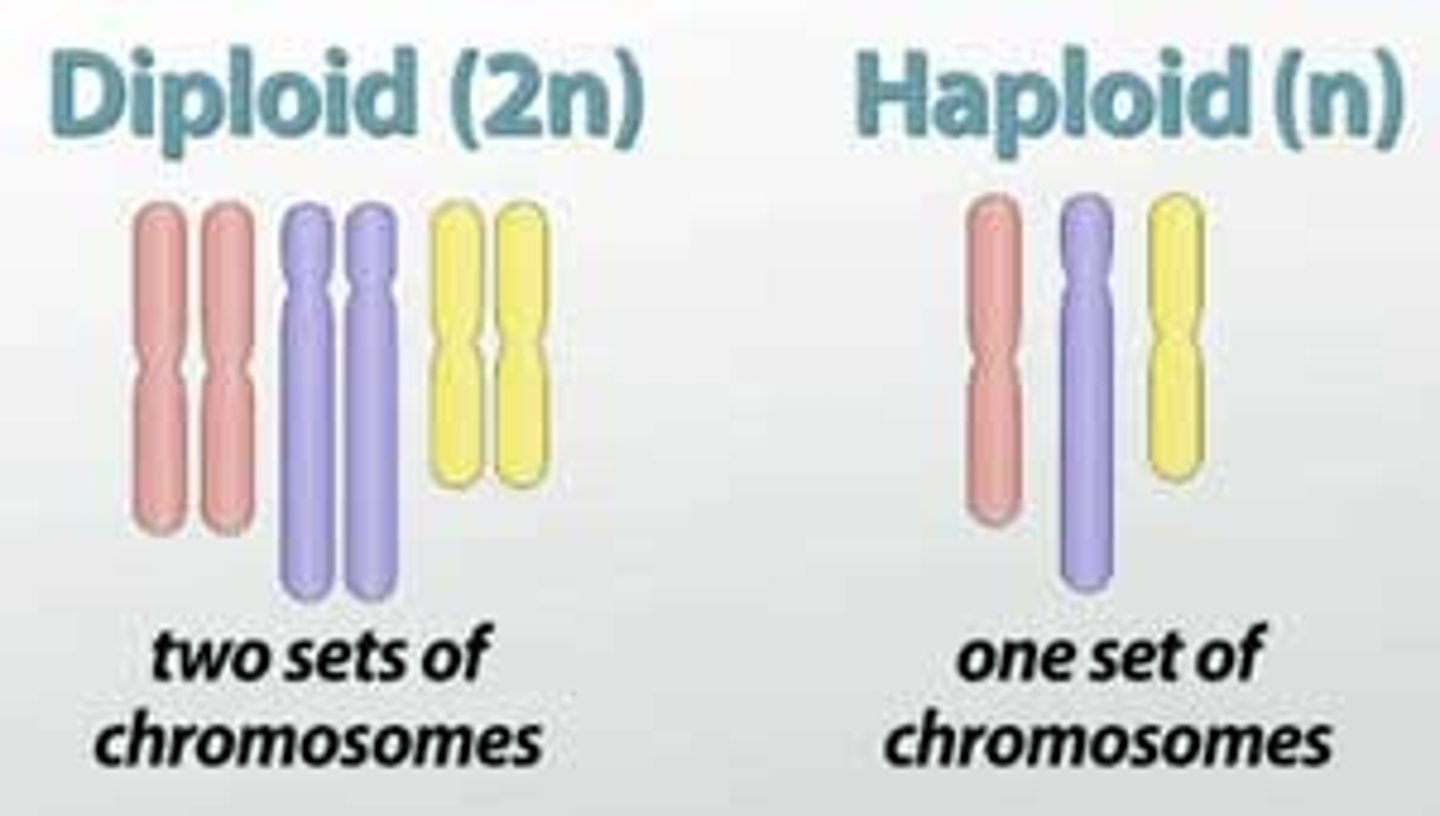Biology Final Exam
1/417
There's no tags or description
Looks like no tags are added yet.
Name | Mastery | Learn | Test | Matching | Spaced |
|---|
No study sessions yet.
418 Terms
Allele
Different forms of a gene at a specific locus
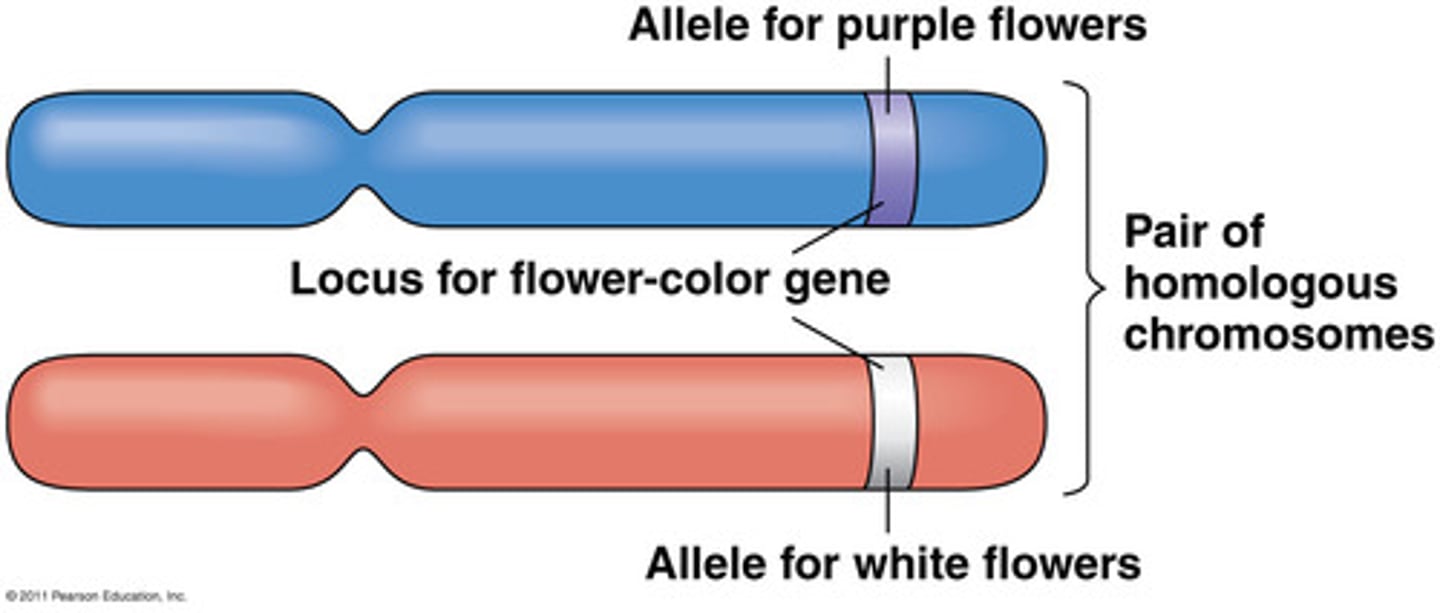
Genotype
genetic makeup of an organism, specifically they alleles they carry for a given trait
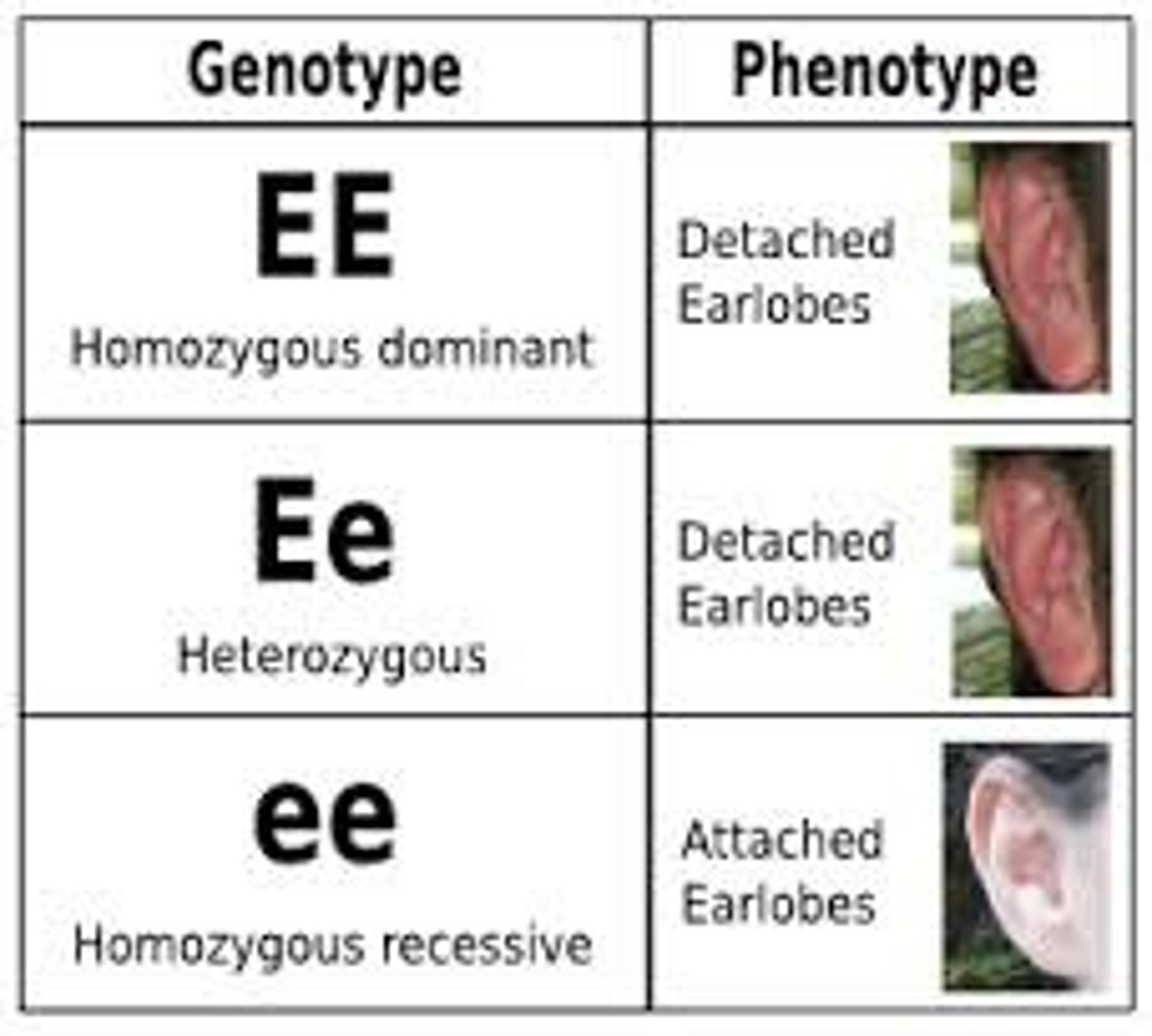
Phenotype
The observable characteristics or traits of an individual
Example. height, eye color
Dominant allele
The trait that is observed in a heterozygous individual; masks the recessive trait
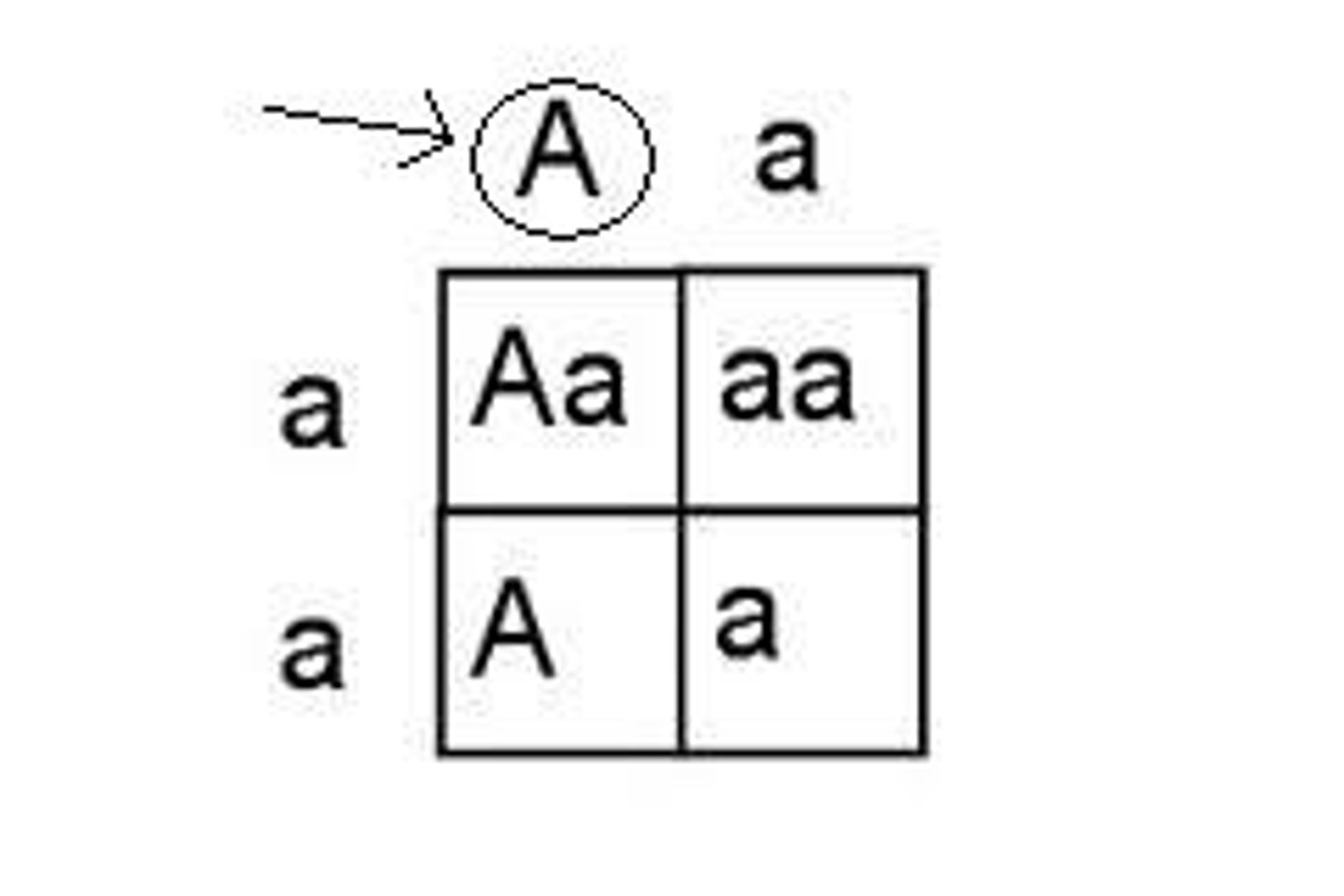
Recessive allele
The trait that is masked by a dominant trait and only expressed when a individual is homozygous recessive
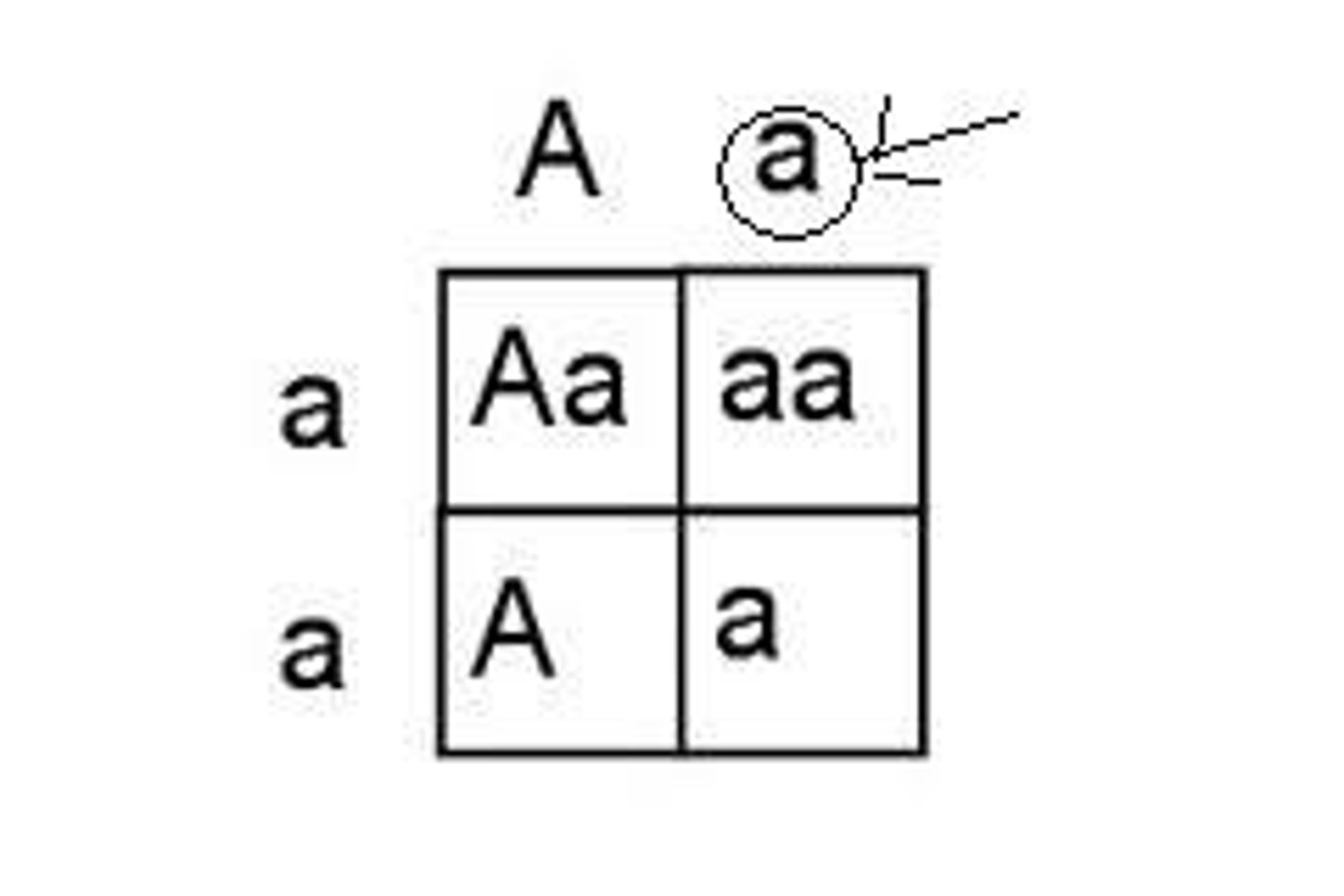
Punnett Square
A tool to predict genotypes and phenotypes resulting from a genetic cross
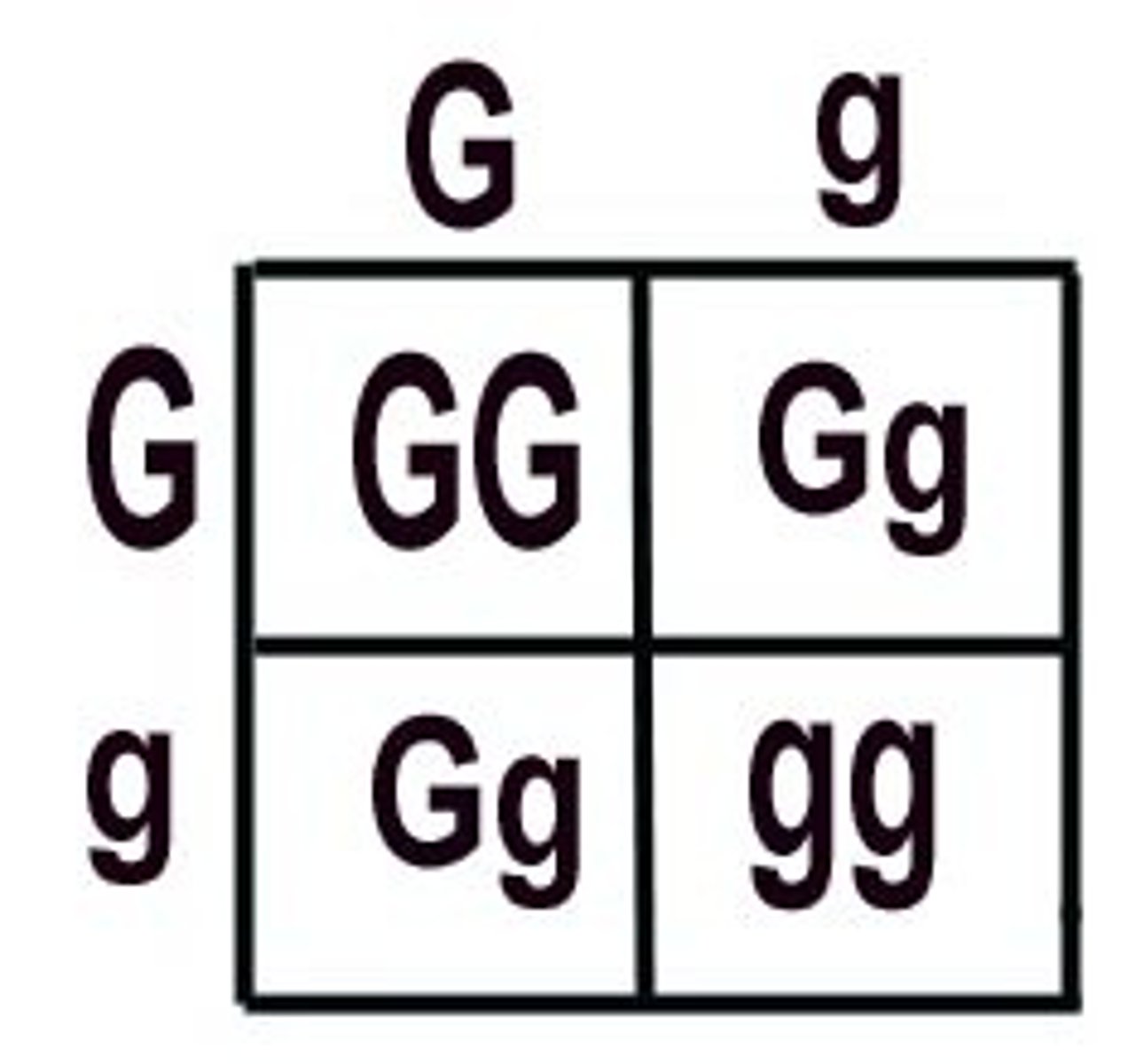
Homozygous
Having two identical alleles
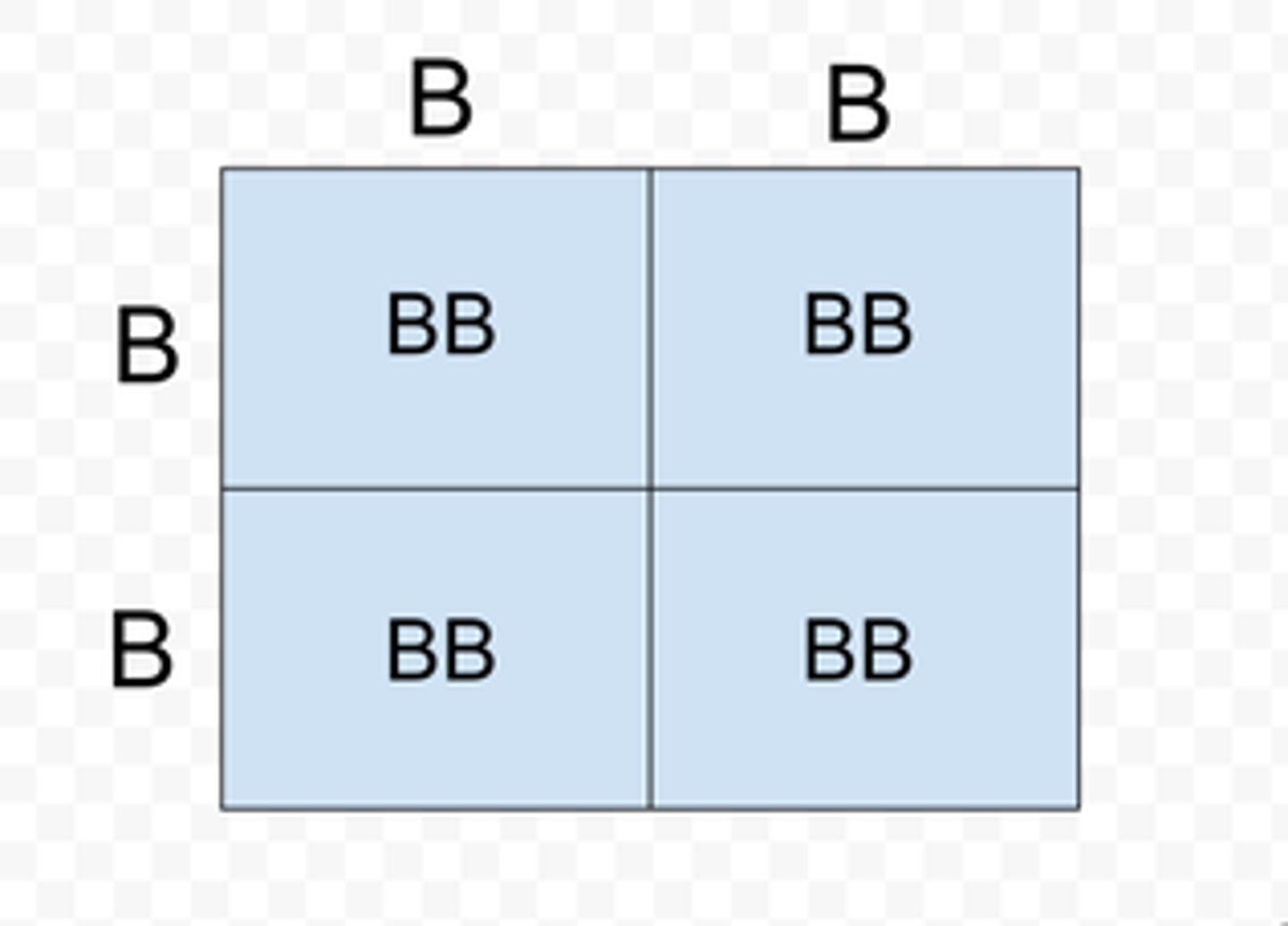
Heterozygous
An individual with two different alleles for a trait
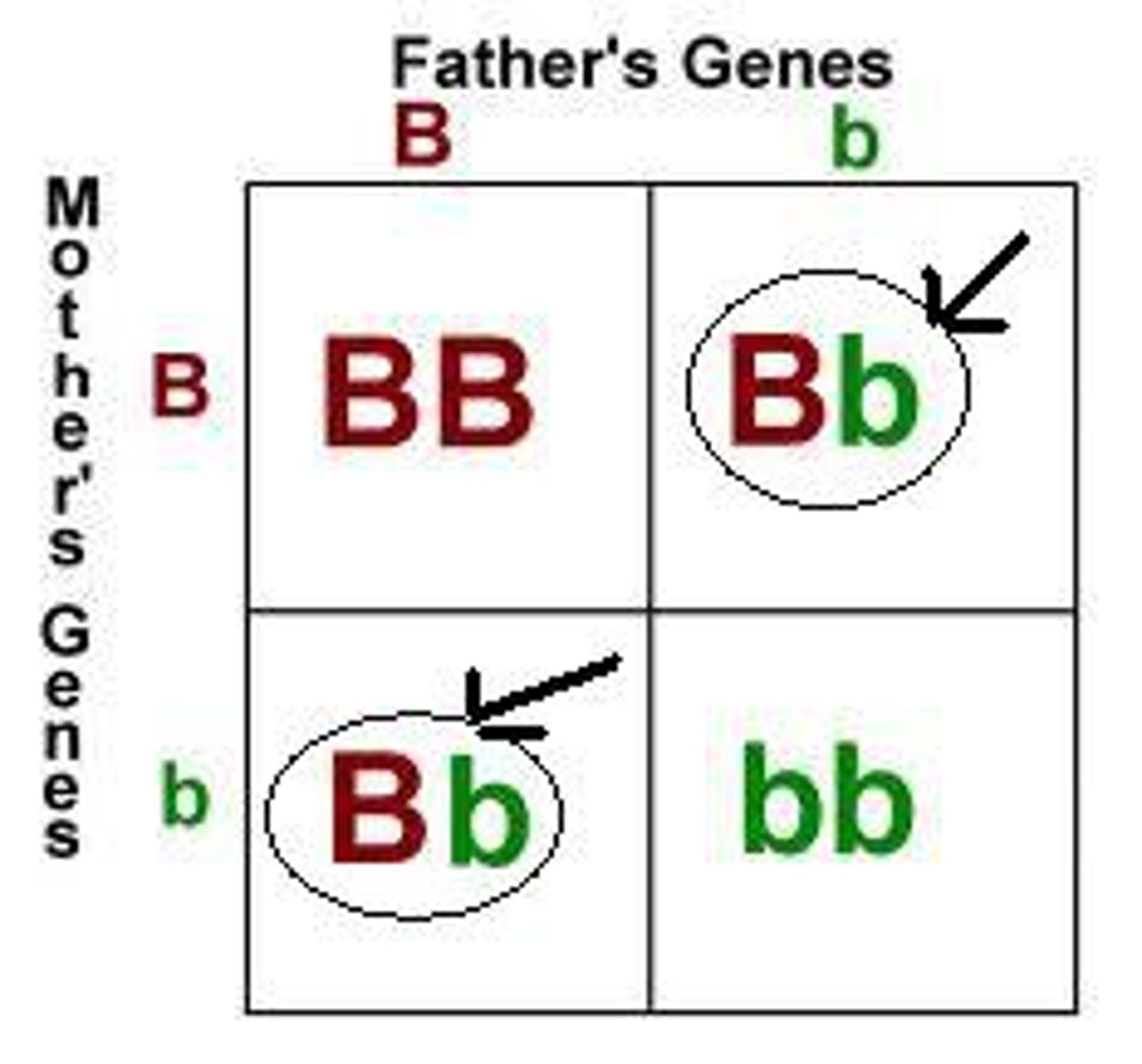
Sex-linked Inheritance
Inheritance of a gene that is located on a sex chromosome, often the X chromosome
Results in sex-dependent inheritance patterns
Autosomal Inheritance
Traits encoded on non-sex chromosomes
Traits affect males and females equally
What are the two laws in the Mendelian Principles
Law of segregation
Law of Independent Assortment
Law of segregation
Each individual has two alleles for each gene, which segregate during gamete formation so each gamete only carries one allele
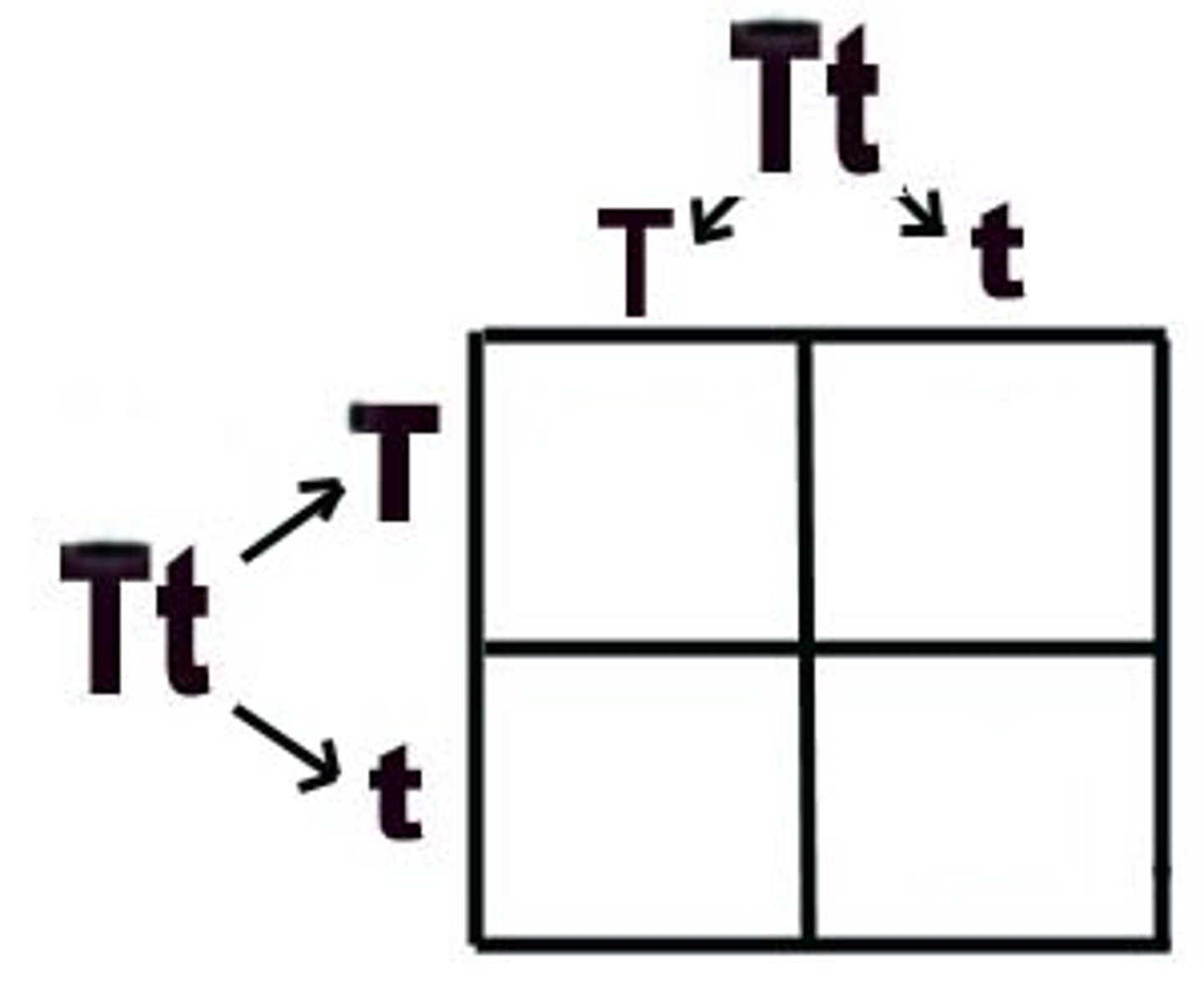
Law of Independent Assortment
Alleles of different genes are distributed independently into gametes when genes are on different chromosomes
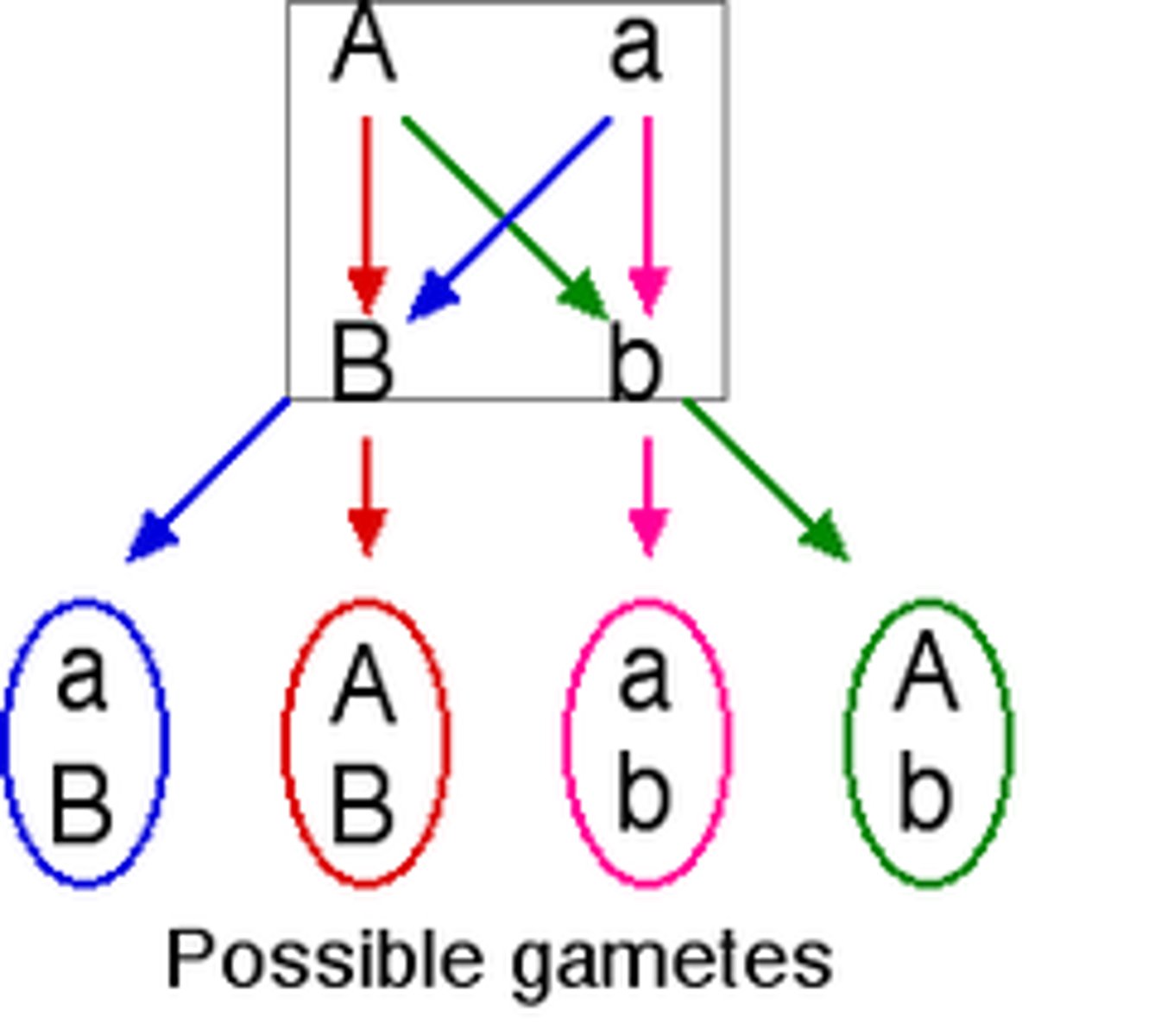
Population Density
The number of individuals per unit area or volume
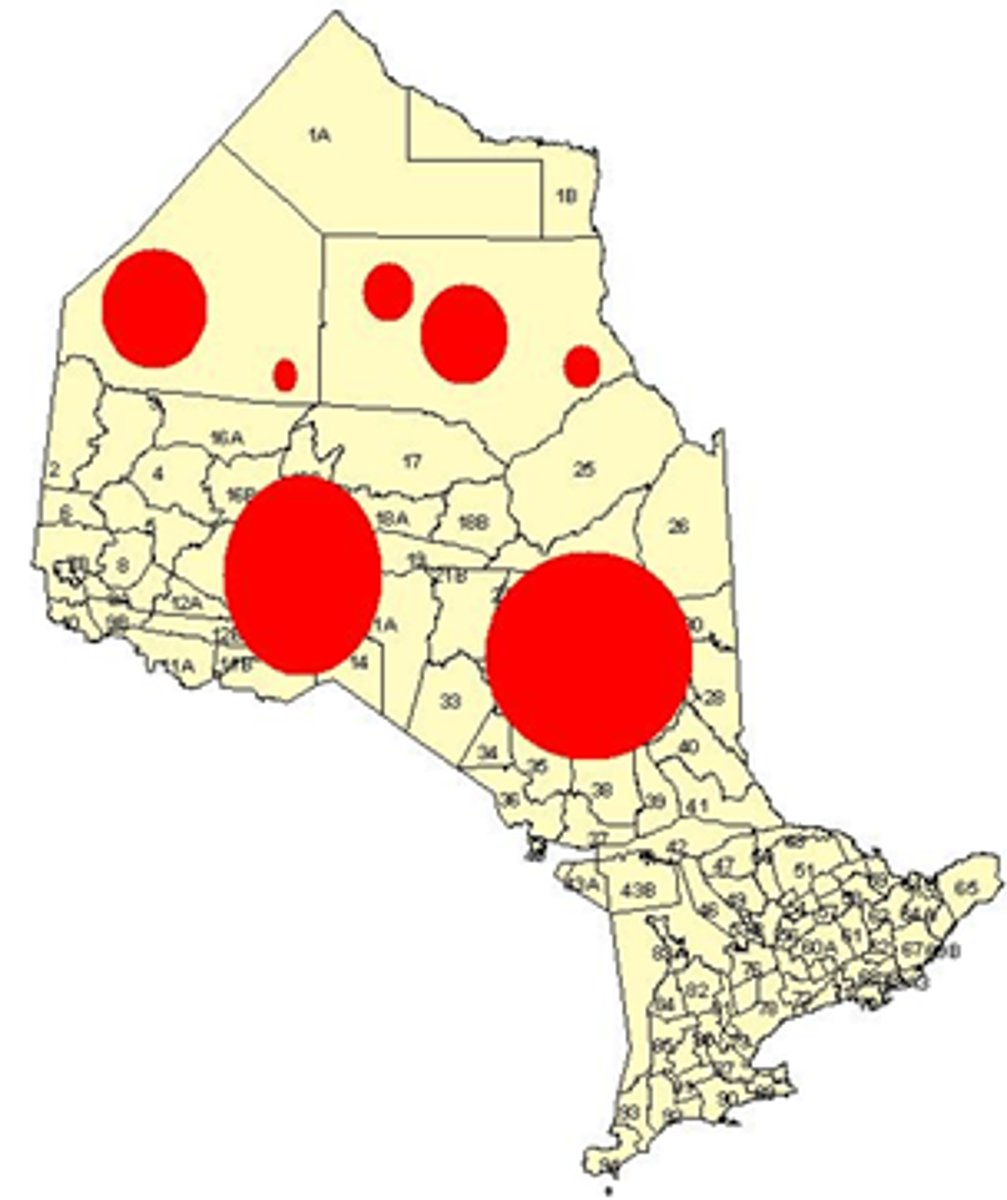
Carrying Capacity
The maximum number of individuals that an environment can support sustainably over time
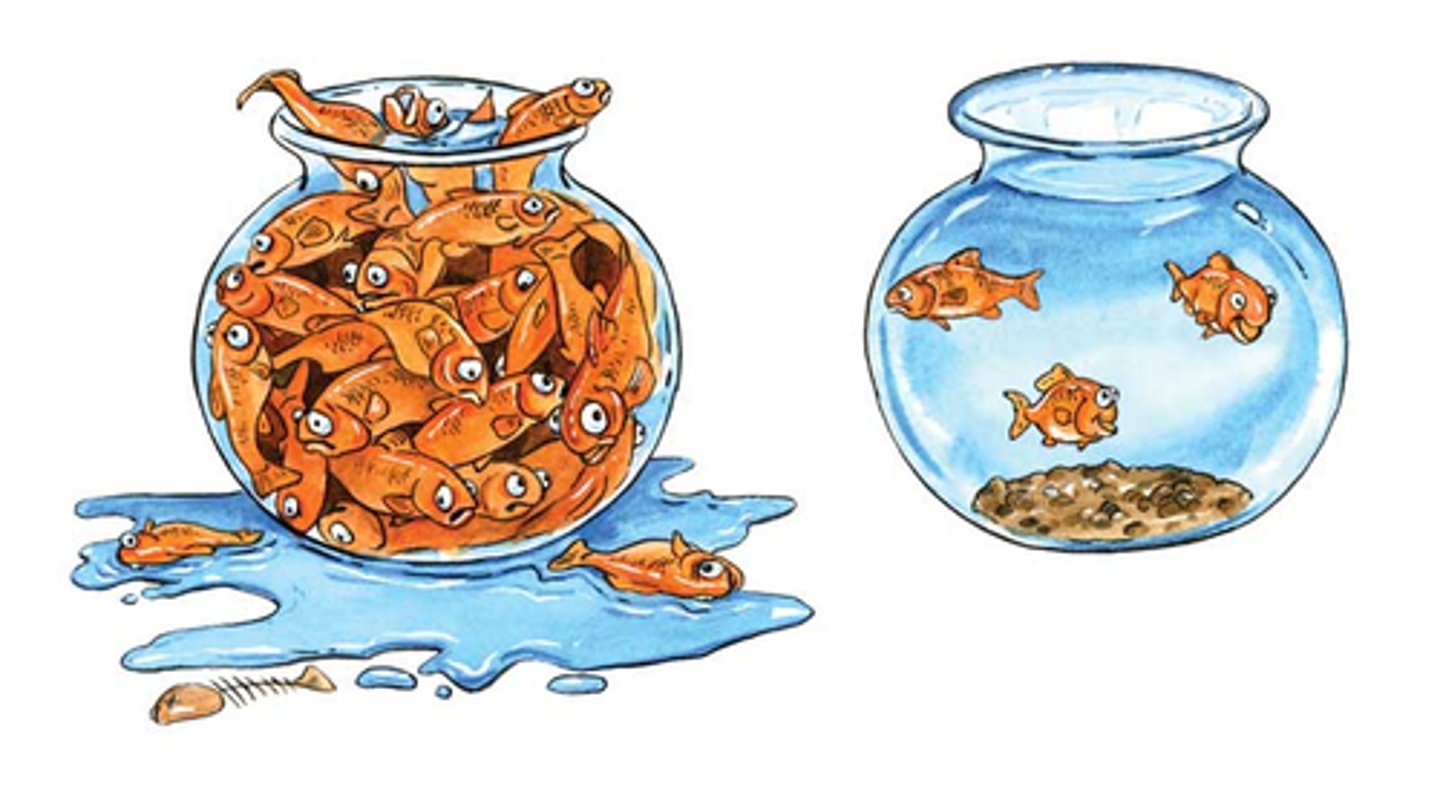
Exponential growth
Growth that occurs when the population grows at a constant rate, often depicted by a J-shaped curve
Density-dependent
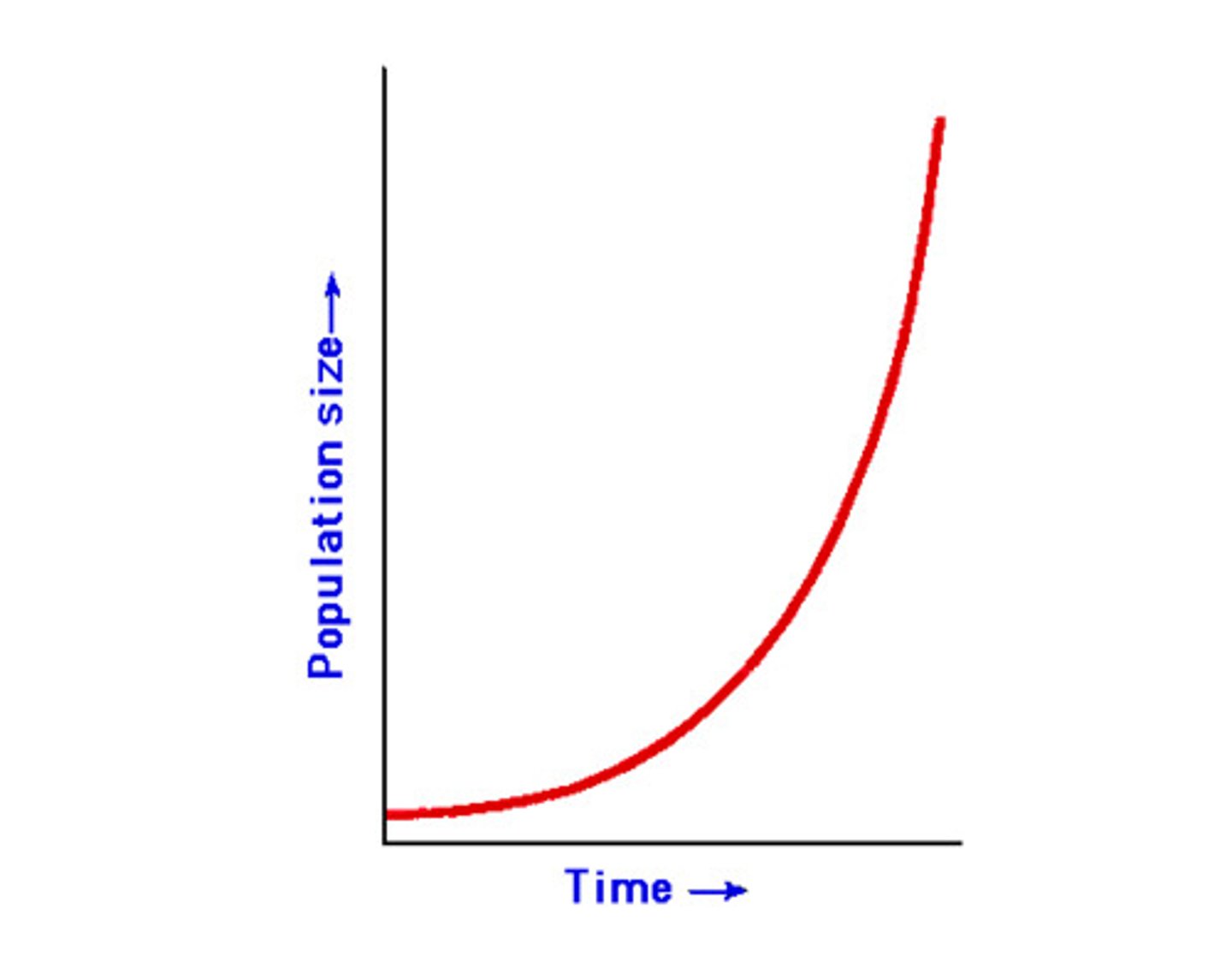
Logistic Growth
Population growth that levels off as resources become limited, represented by an S-shaped curve
Density-dependent
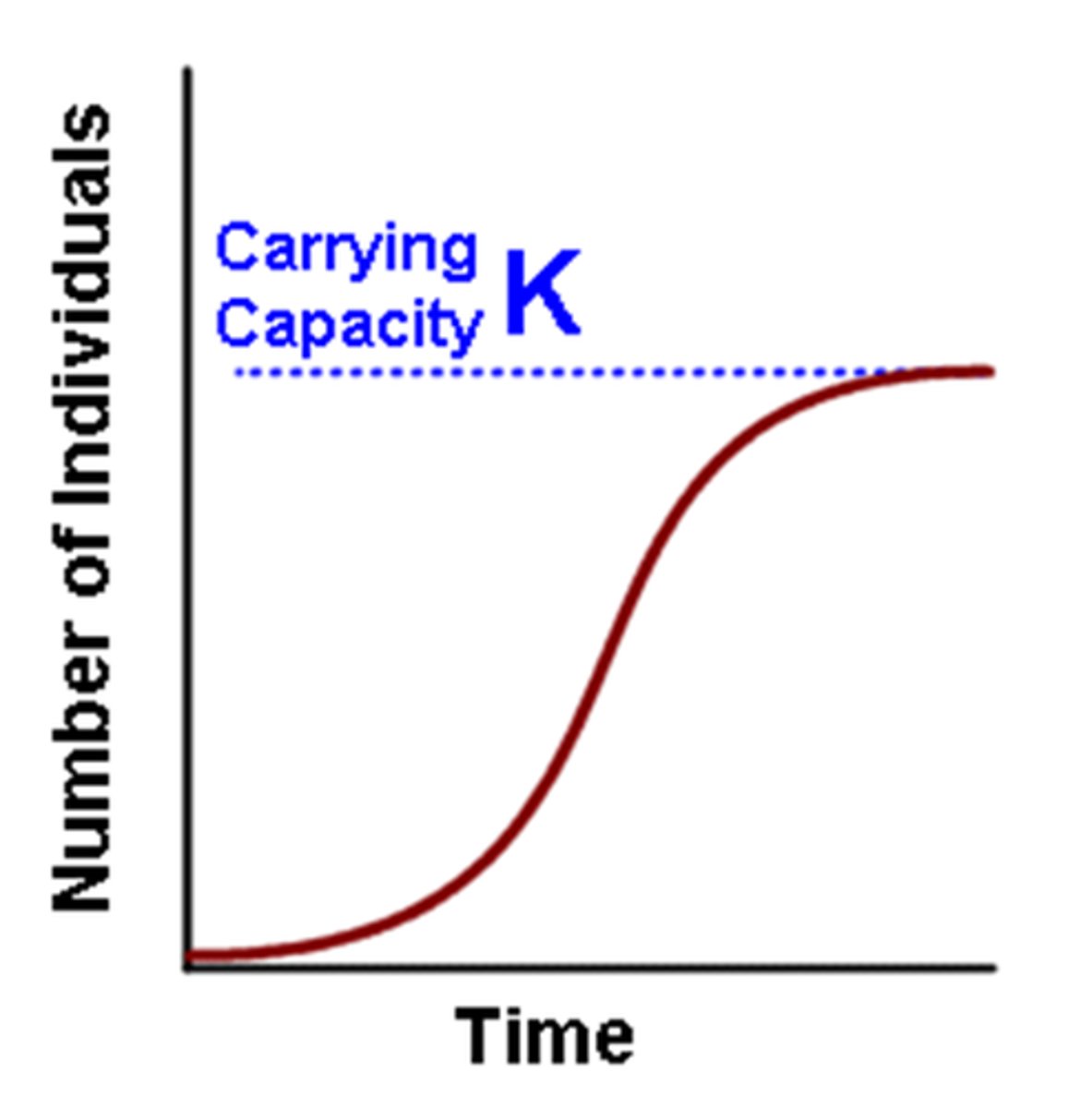
Net Reproductive Rate (R₀)
A measure indicating whether a population is increasing, stable, or declining
Values greater than 1 indicate growth
Values = 1 indicate stability
Values less than 1 indicate decline
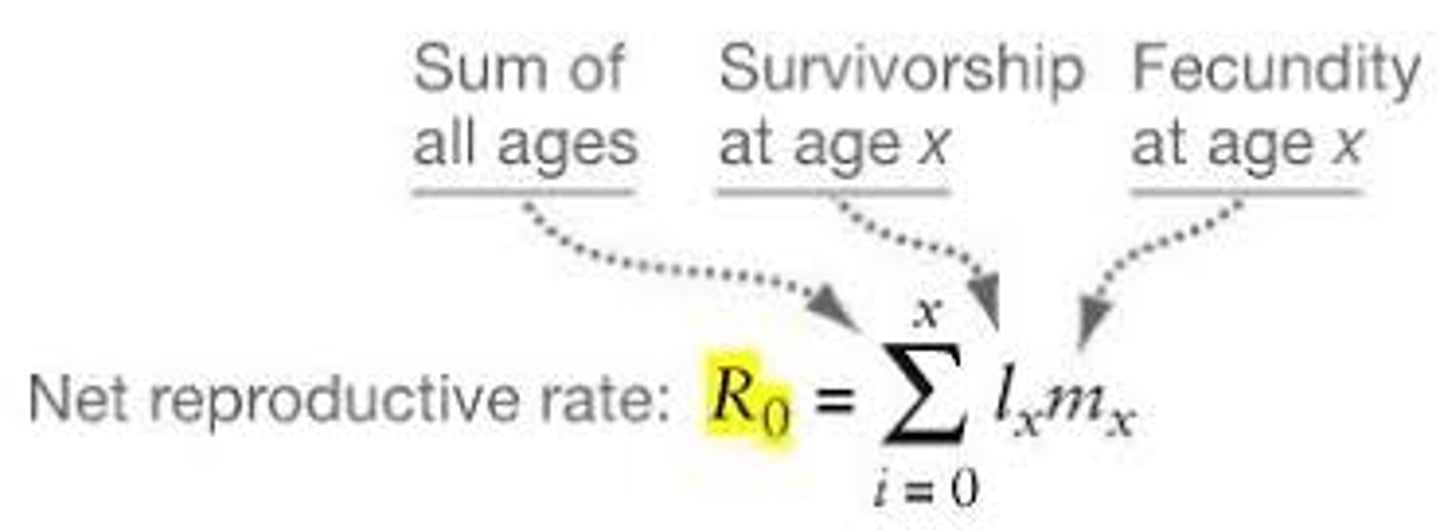
Evolution
a change in the genetic composition of a population over time
Hardy-Weinberg Equilibrium (HWE)
a theoretical state where allele frequencies in a population remain constant if no evolutionary forces are acting
What are examples of evolutionary forces that would affect the Hardy-Weinberg equilibrium?
Mutation
Migration
Selection
Genetic drift
Allele Frequency
The relative frequency of an allele in the gene pool of a population

Genetic Drift
Random changes in allele frequencies from one generation to the next, especially impactful in small populations
Specific types include the founder and bottleneck effect
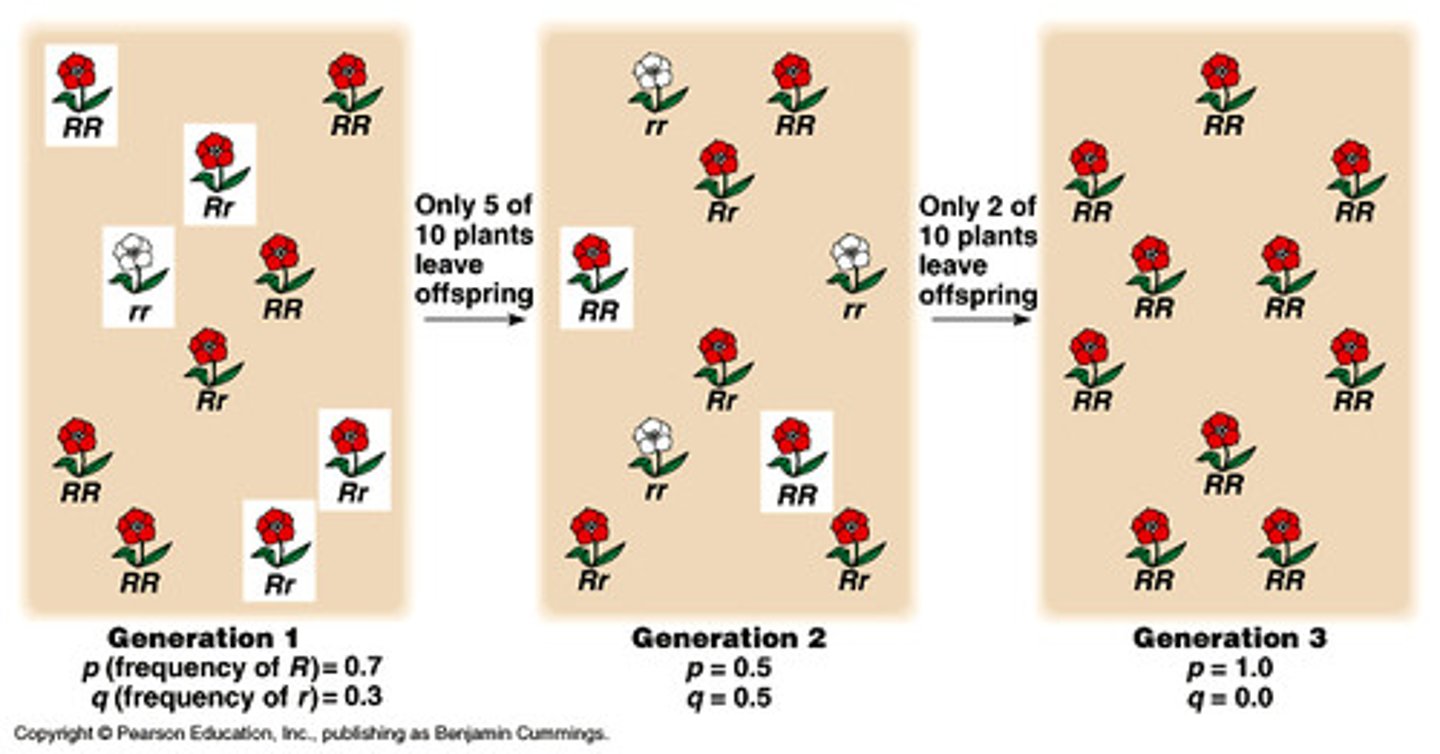
Natural Selection
The process by which individuals with advantageous traits reproduce more successfully, leading to changes in allele frequencies over time
Adaptation
A trait that becomes common in a population due to natural selection because it increases fitness in a specific environment
Directional Selection
Selection that favors one extreme phenotype, often seen when environmental pressures favor a specific trait
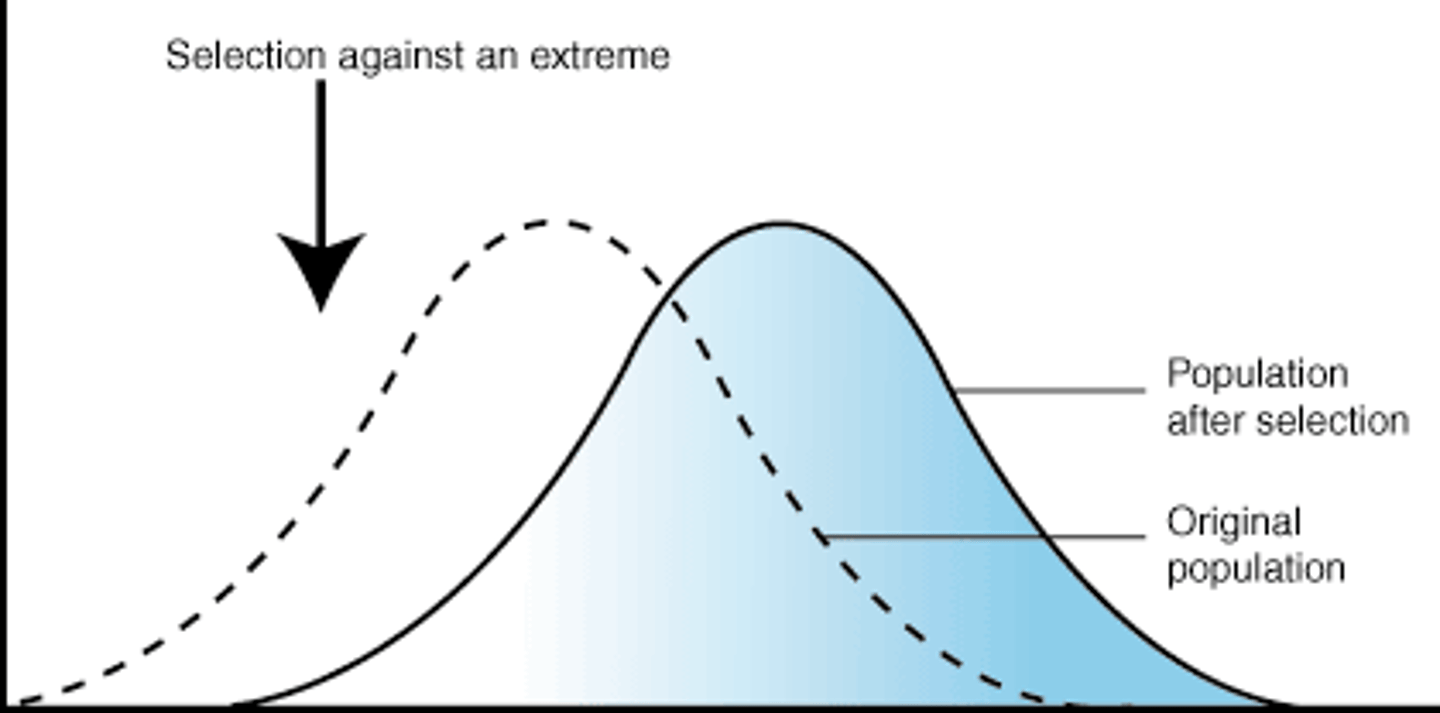
Stabilizing Selection
Selection that favors intermediate phenotypes, reducing variation within a trait
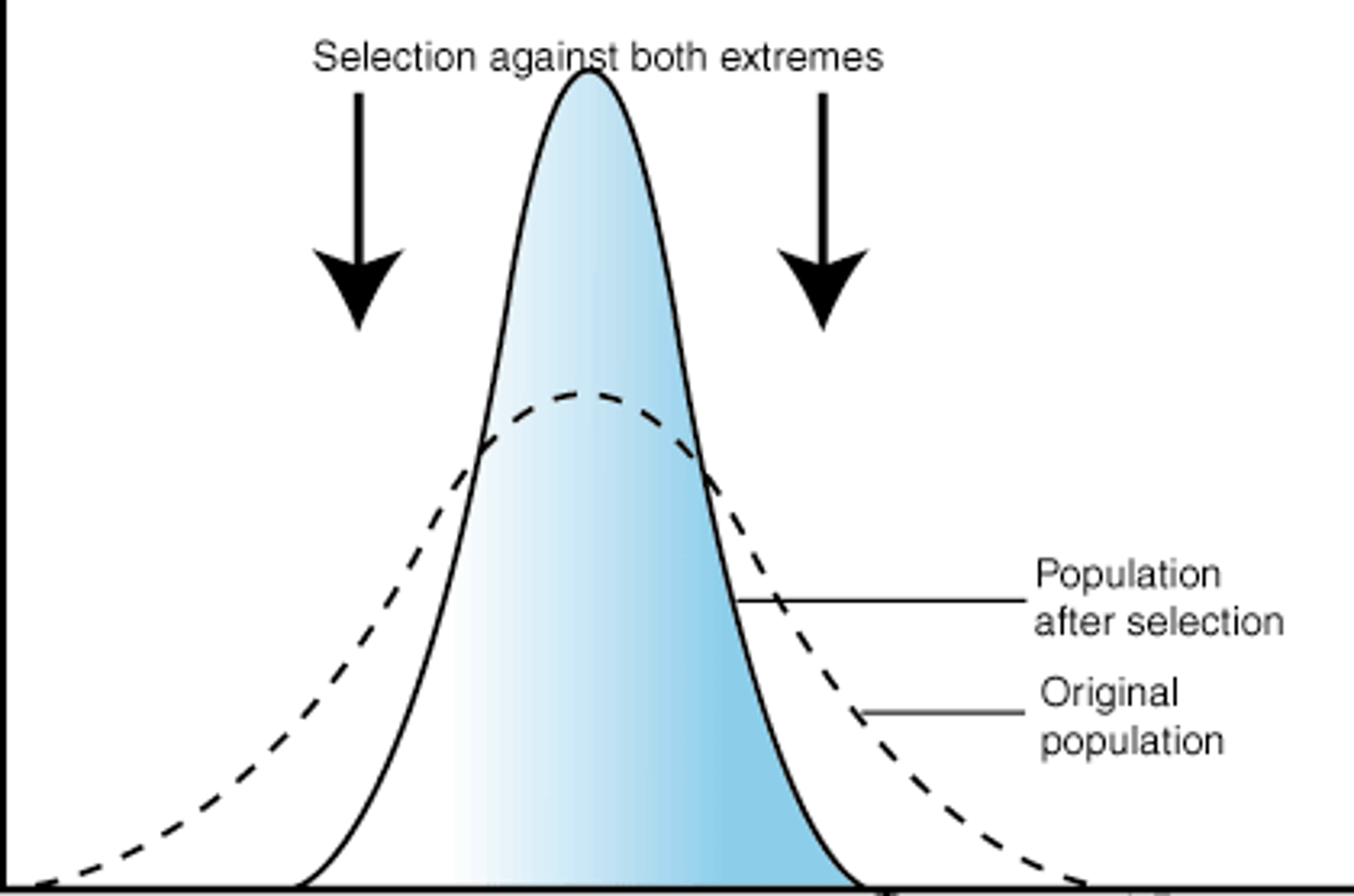
Disruptive Selection
Selection that favors both extreme phenotypes, increasing variation within a trait
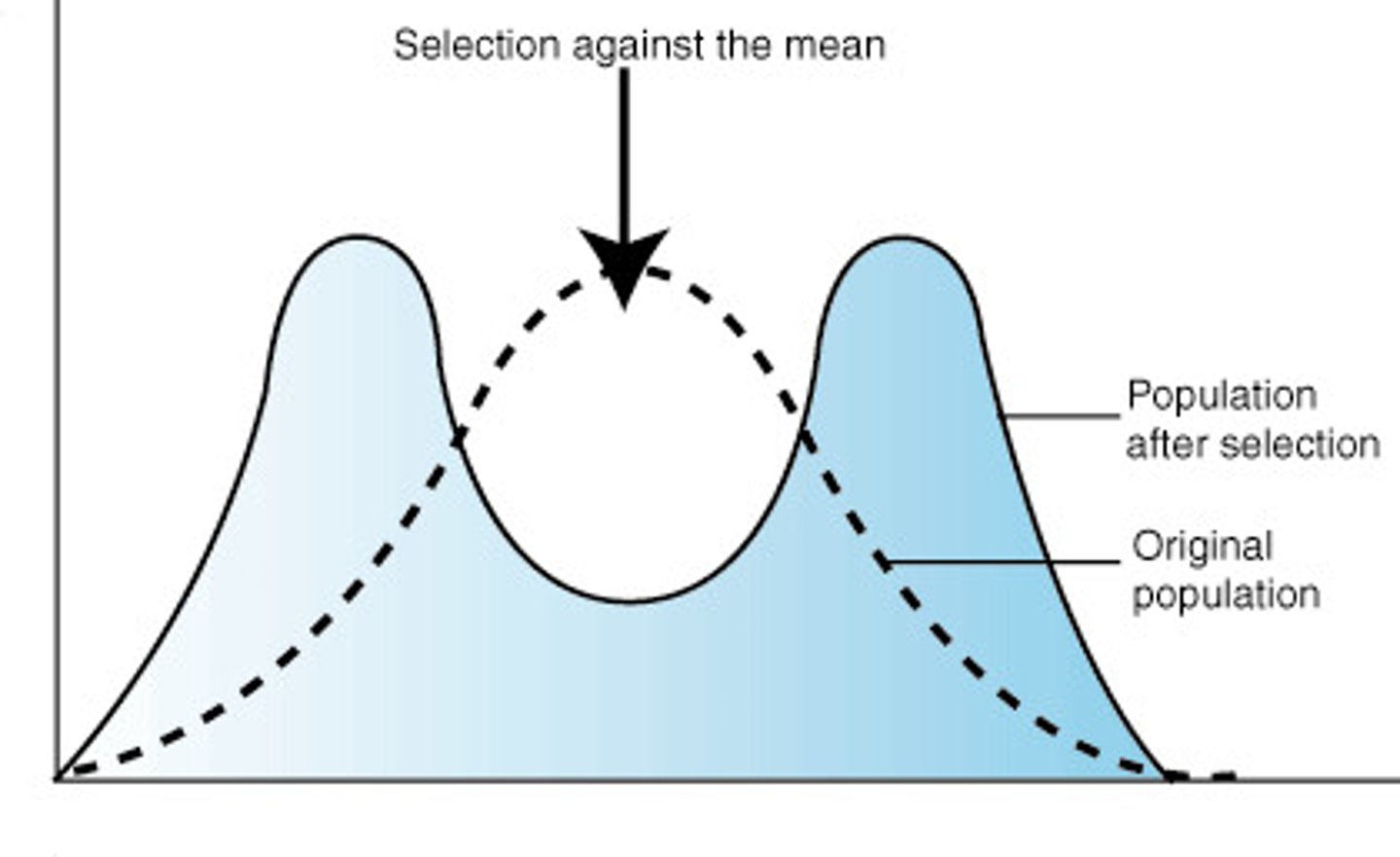
Fitness
The reproductive success of an individual relative to others, often related to how well an individual's traits are suited to the environment
Gene Flow
Movement of alleles between populations, increasing genetic diversity within populations
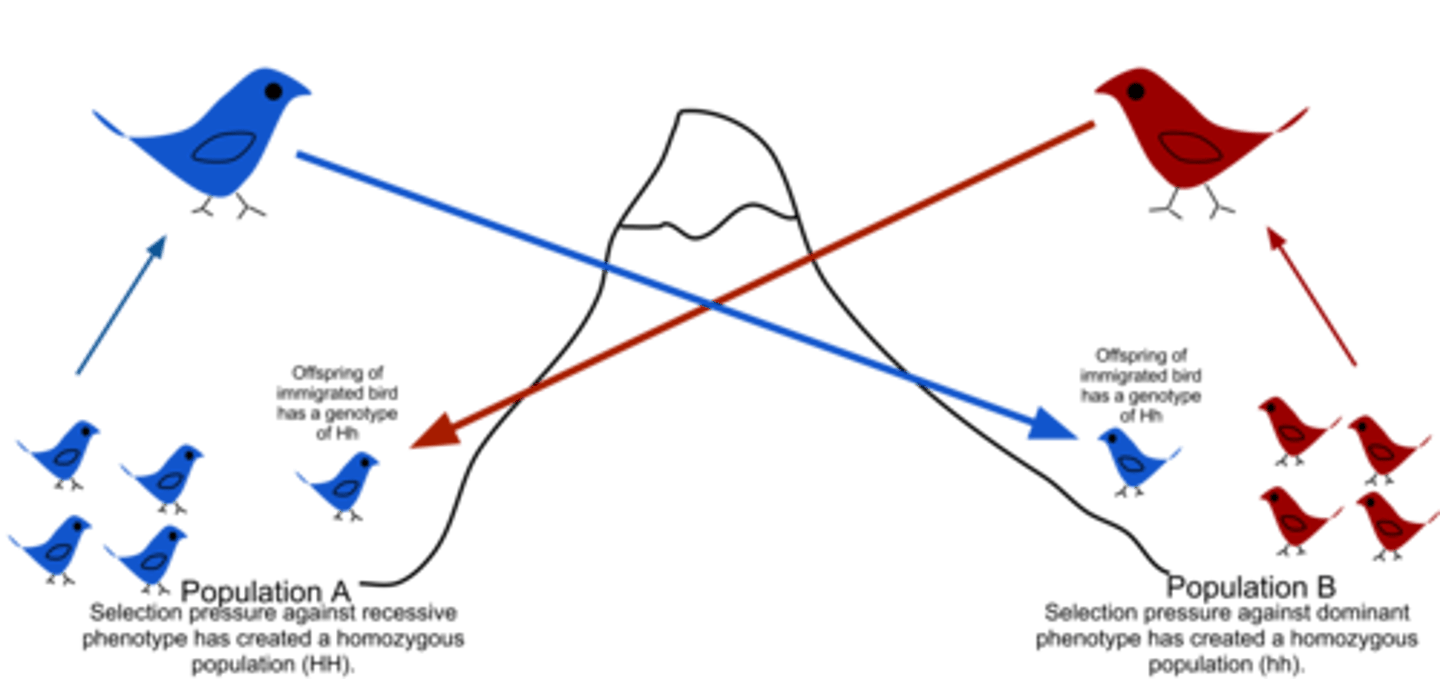
Founder Effect
A reduction in genetic diversity when a population is established by a small number of individuals from a larger population
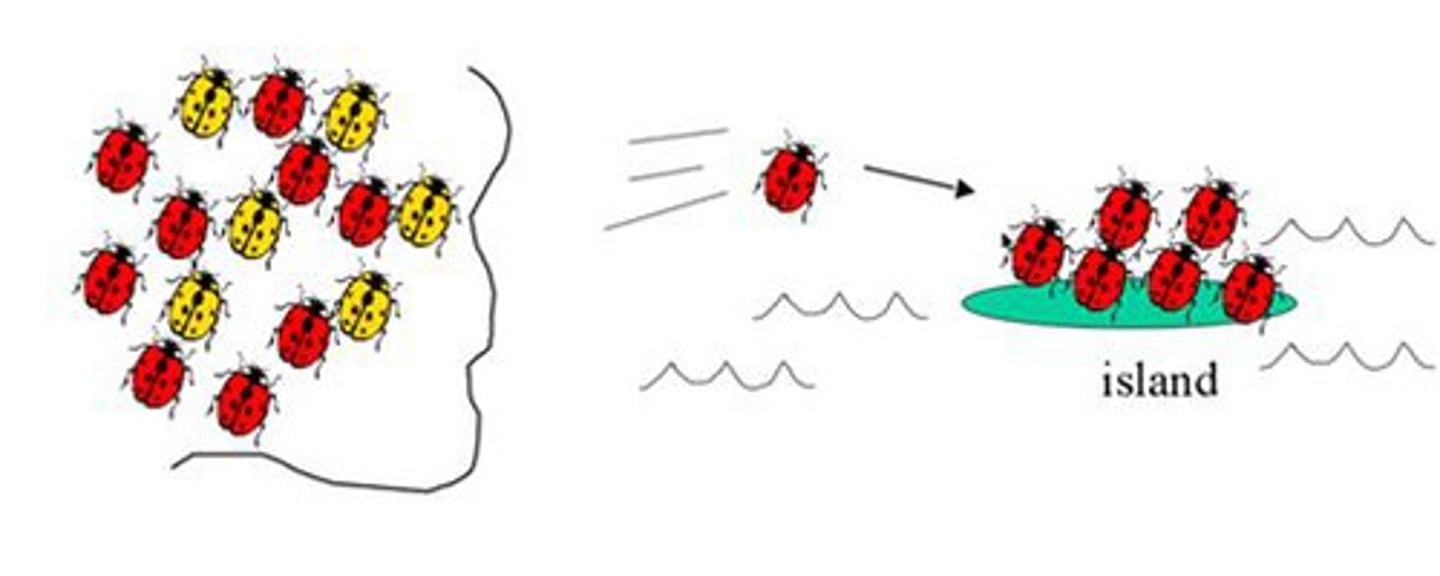
Pedigree
a chart used to trace inheritance patterns of specific traits within families
often used to determine autosomal vs. sex-linked inheritance
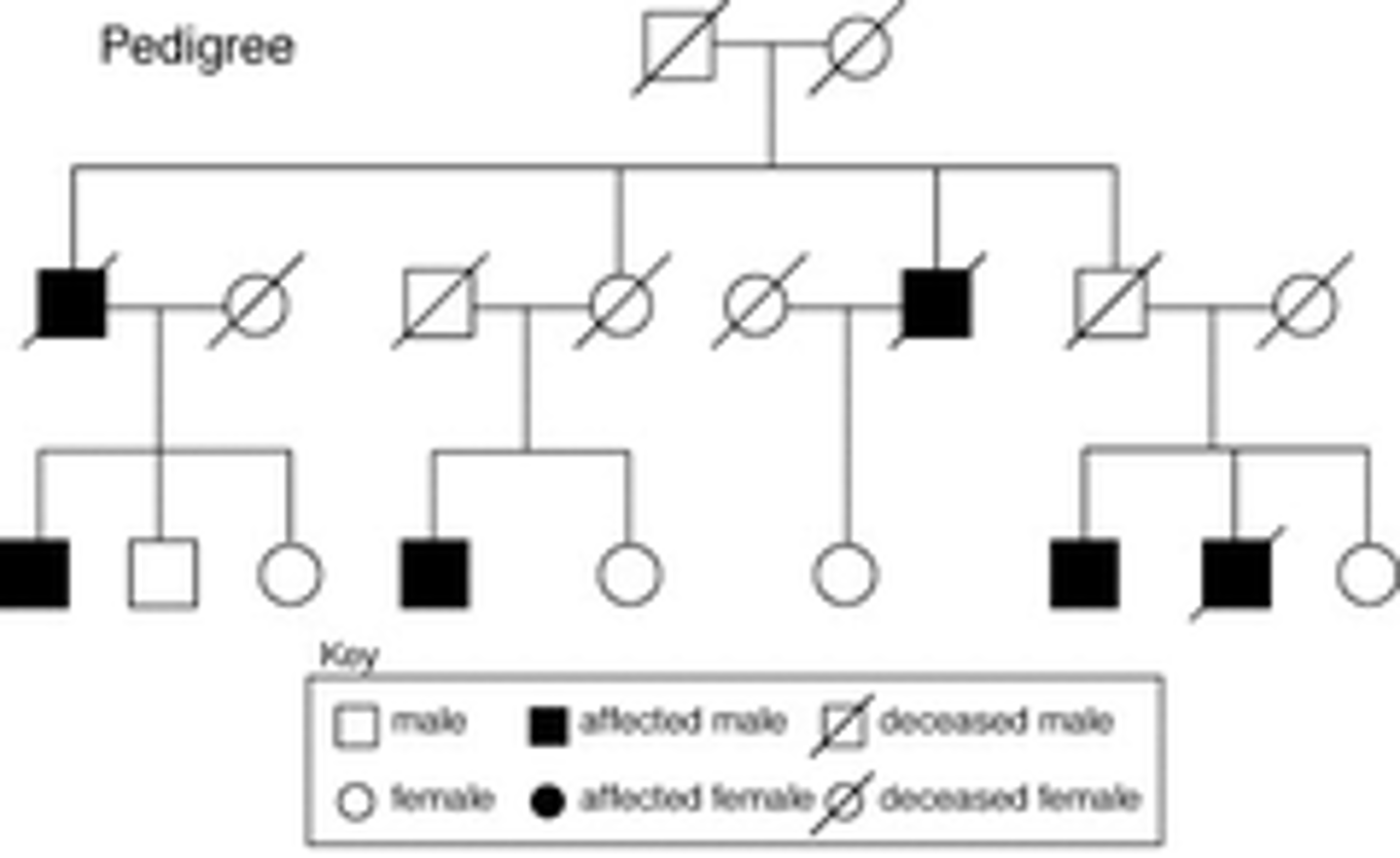
Carrier
An individual who carries one copy of a recessive allele for a trait without expressing it
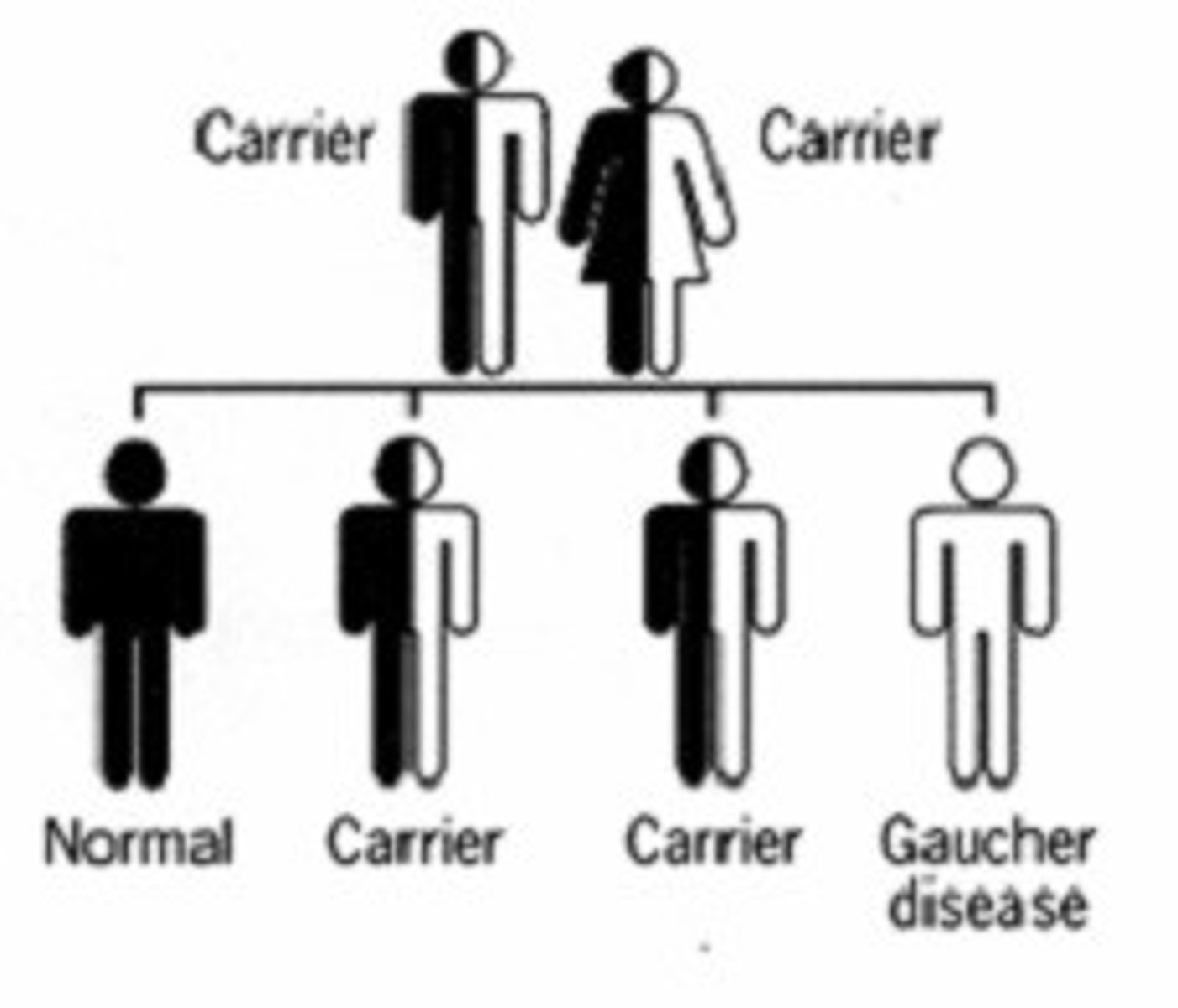
Bottleneck effect
A type of genetic drift that occurs when a population's size is drastically reduced due to an external event such as a natural disaster or human activity
Leads to a loss in genetic diversity
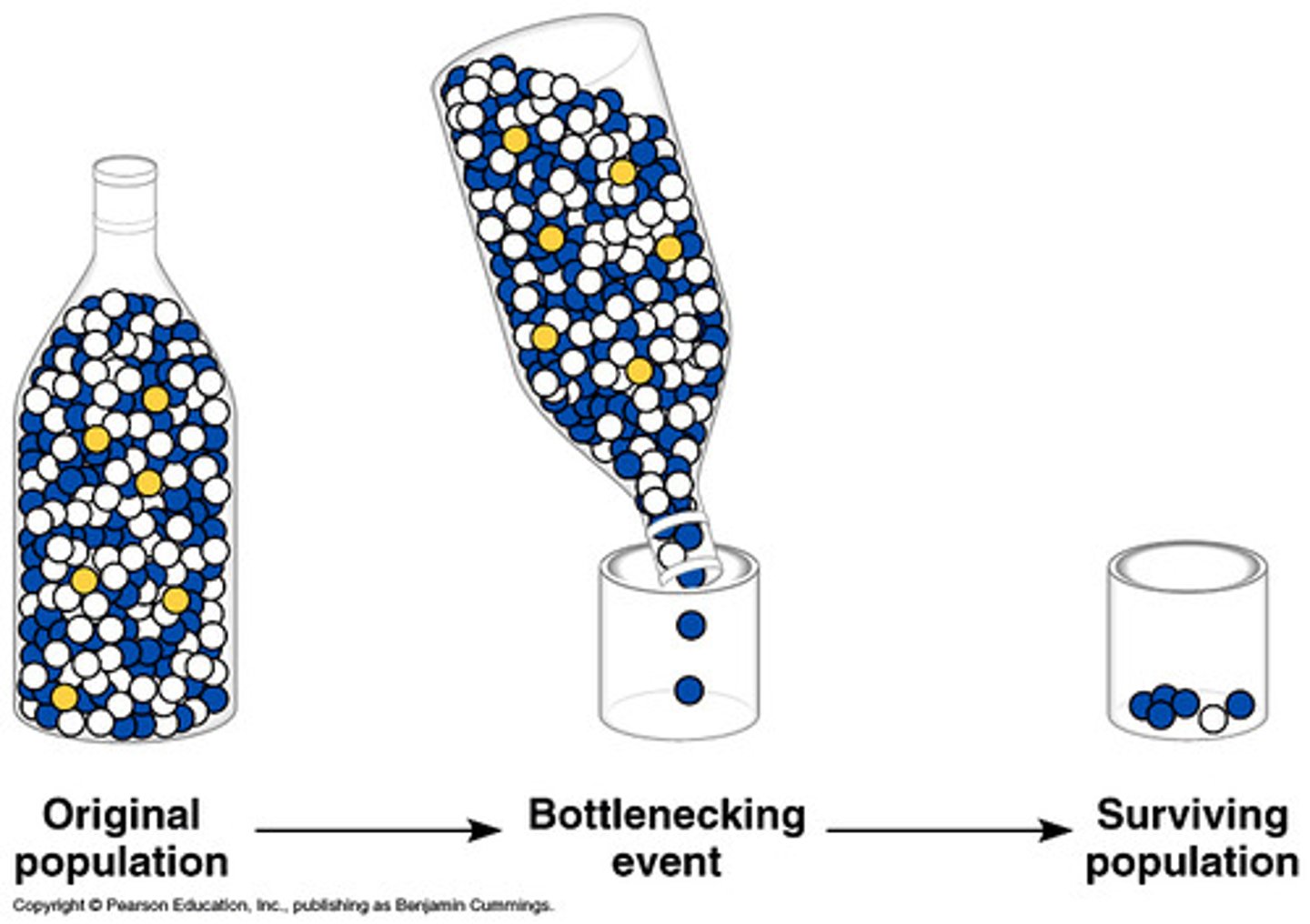
Allele Frequency (equation)
p + q = 1
p: frequency of the dominant allele
q: frequency of the recessive allele

Genotype Frequencies (equation)
p^2 + 2pq + q^2 = 1
p^2: frequency of homozygous dominant individuals
2pq: Frequency of heterozygous individuals
q^2: Frequency of homozygous recessive individuals

Why would you use Hardy-Weinberg Equilibrium equations?
(Allele frequencies & Genotype Frequencies)
They help determine if a population is in Hardy-Weinberg Equilibrium, which implies no evolution is occurring if the conditions for equilibrium are met
Net Reproductive Rate (equation)
R₀ = ∑(lx⋅mx)
lx: Proportion of individuals surviving to age x
mx: Average number of offspring produced by an individual at age x
Why would you use the Net Reproductive Rate equation?
Used to determine if a population is growing (R0 > 1), stable (R0 = 1), or declining (R0 < 1)
Exponential Growth (equation)
ΔN/Δt = rN
N: population size
t: time
r: Per capita rate of increase (birth rate - death rate)
Logistic Growth (equation)
ΔN/Δt = rN(1 − N/K)
N: population size
t: time
r: Per capita rate of increase (birth rate - death rate)
K: carrying capacity (maximum sustainable population size)
Mark-and-Recapture Method (equation)
N = (M×n)/m
N: Estimated total population size
M: Number of individuals marked in the first capture
n: Total number of individuals captured in the second sample
m: Number of marked individuals recaptured in the second sample
Allele Frequency Calculation (equation)
number of copies of an allele/ total number of alleles in the population
If a practice problem is asking about a allele frequencies what equation would you use to solve?
p + q = 1
If a practice problem is asking about individual people, organisms, population, or genotypes, what equation would you use to solve?
p^2 + 2pq + q^2 = 1
What information will most Hardy-Weinberg questions initially be given to you and why?
the q^2 (recessive allele)
This is because if they gave you the dominant information, there's no way to tell if they are homozygous or heterozygous
If a problem asks how many alleles are in the gene pool, how would you determine that?
you would take the total amount of individuals given in the problem and multiply it by 2 because those organisms are diploid and have two sets of alleles each.
Example. In a population butterflies, pink wings is recessive to purple wings. In a population of 600 butterflies, 54 have pink wings.
Q. How many alleles are in the gene pool?
A. 600 x 2 = 1200 alleles
In the Hardy-Weinberg equilibrium equation p^2 + 2pq + q^2 = 1, what does p^2 represent?
The homozygous dominant individuals
In the Hardy-Weinberg equilibrium equation p^2 + 2pq + q^2 = 1, what does q^2 represent?
The homozygous recessive individuals
In the Hardy-Weinberg equilibrium equation p^2 + 2pq + q^2 = 1, what does 2pq represent?
The heterozygous individuals
If a problem gives you the dominant phenotype percentage, what is it telling you in terms of the Hardy-Weinberg Equilibrium equation?
Its giving you the value of both p^2 and 2pq
Are larger or smaller populations most effected by genetic drift?
Small population
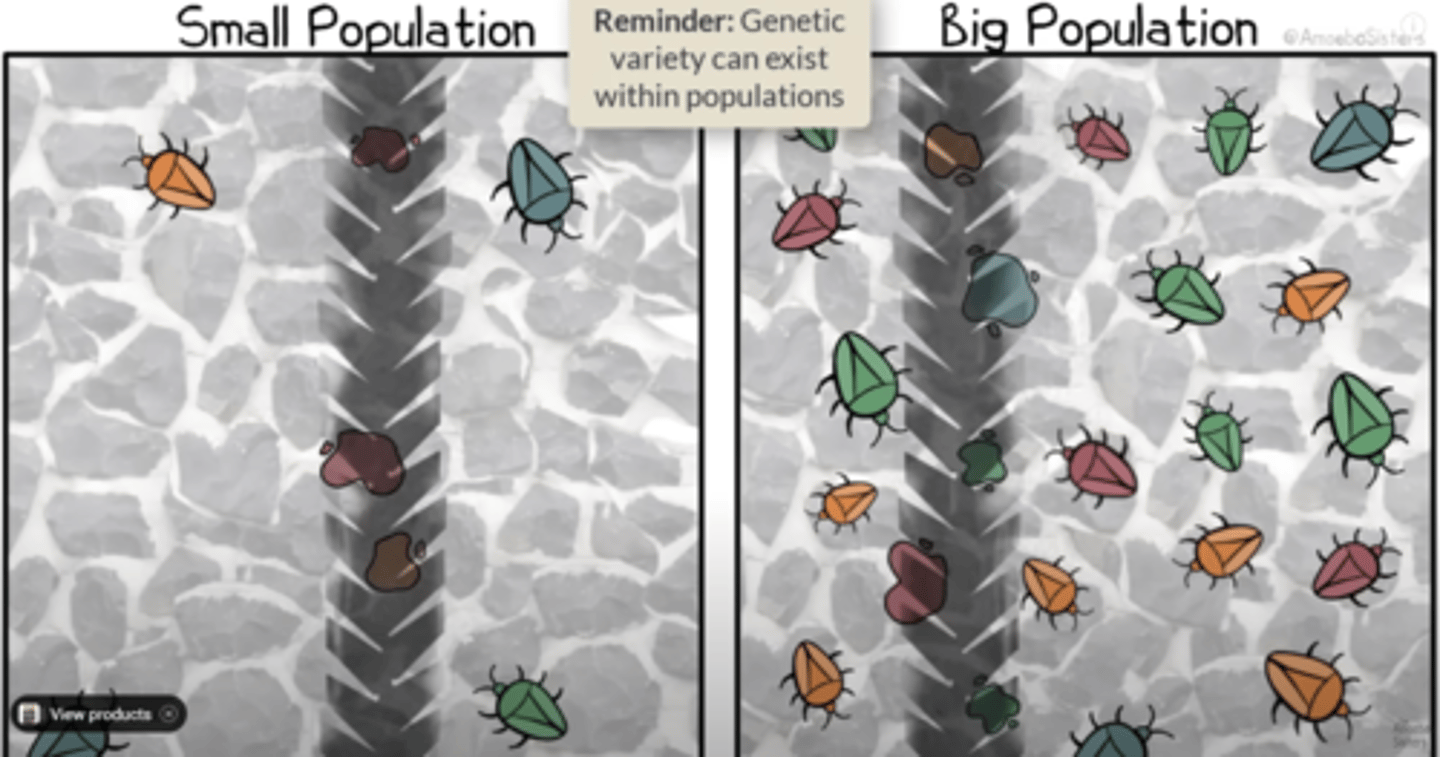
When determining if a trait is x-linked recessive, what are you looking for?
You are looking at an affected mother and seeing if her all her sons are affected. If not, then the trait is not x-linked recessive
When determining if a trait is y-linked , what are you looking for?
You are looking to see if any female is affected and if all the sons are affected. If there are affected females, then it is not y-linked. If there are sons without the trait, then it is not y-linked
When determining if a trait is x-linked dominant, what are you looking for?
You are looking at an affected son and seeing if his mom is affected. If not, then it is not an x-dominant trait
Codominance
2 dominant alleles compete to display 1 phenotype
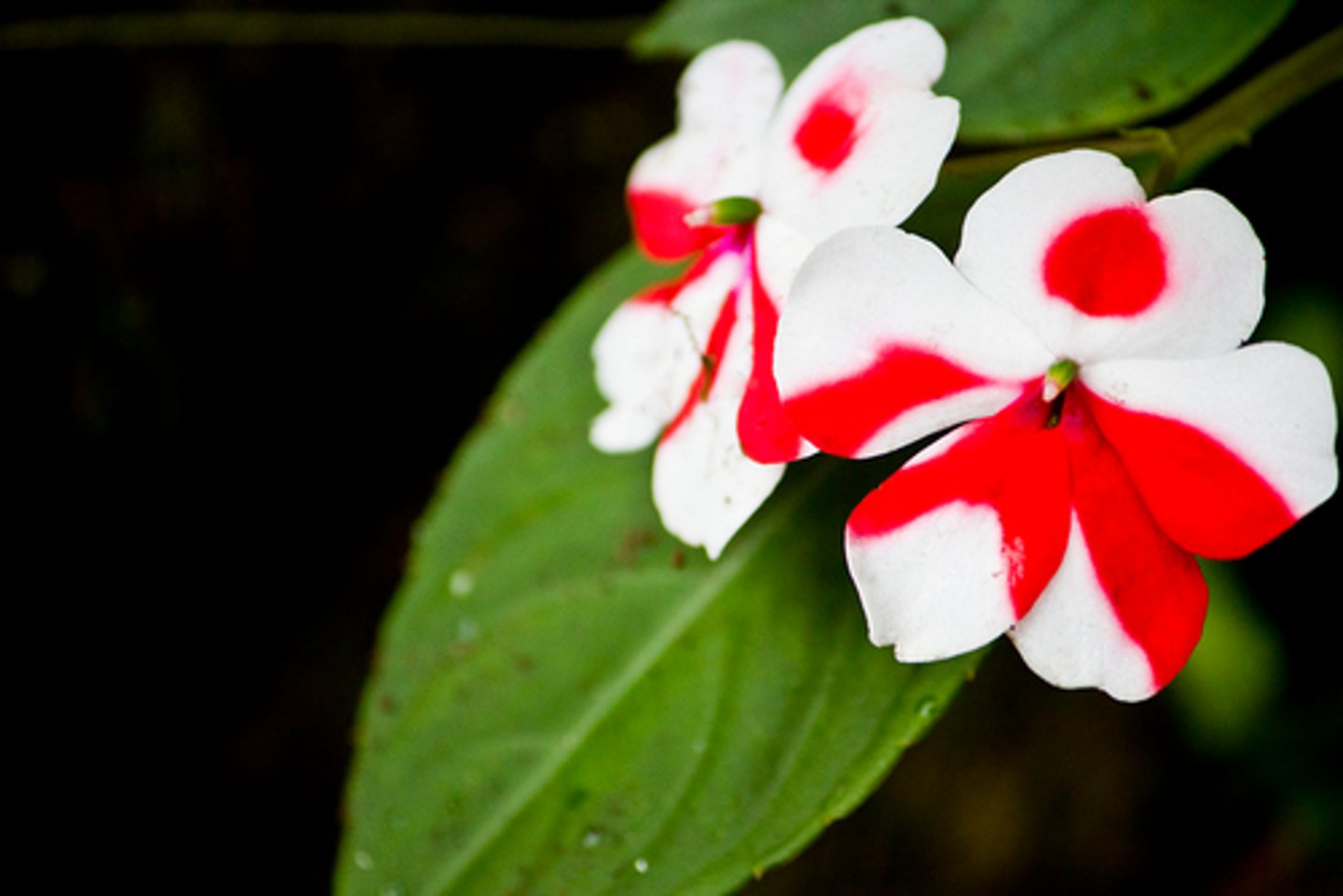
Hemizygous
an individual who has only one copy of a gene in a diploid organism. This commonly applies to genes on the X chromosome in males
(e.g., in humans, males are hemizygous for X-linked genes, as they have one X and one Y chromosome).
Biotic factors
living components of an ecosystem, such as plants, animals, and microbes, which interact with each other and their environment
Abiotic factors
non-living elements, like temperature, water, sunlight, and soil, which influence and shape the ecosystem
Principle of allocation
resources generally cannot serve multiple functions simultaneously
Survivorship
the proportion of individuals in a population that survive from birth to various ages
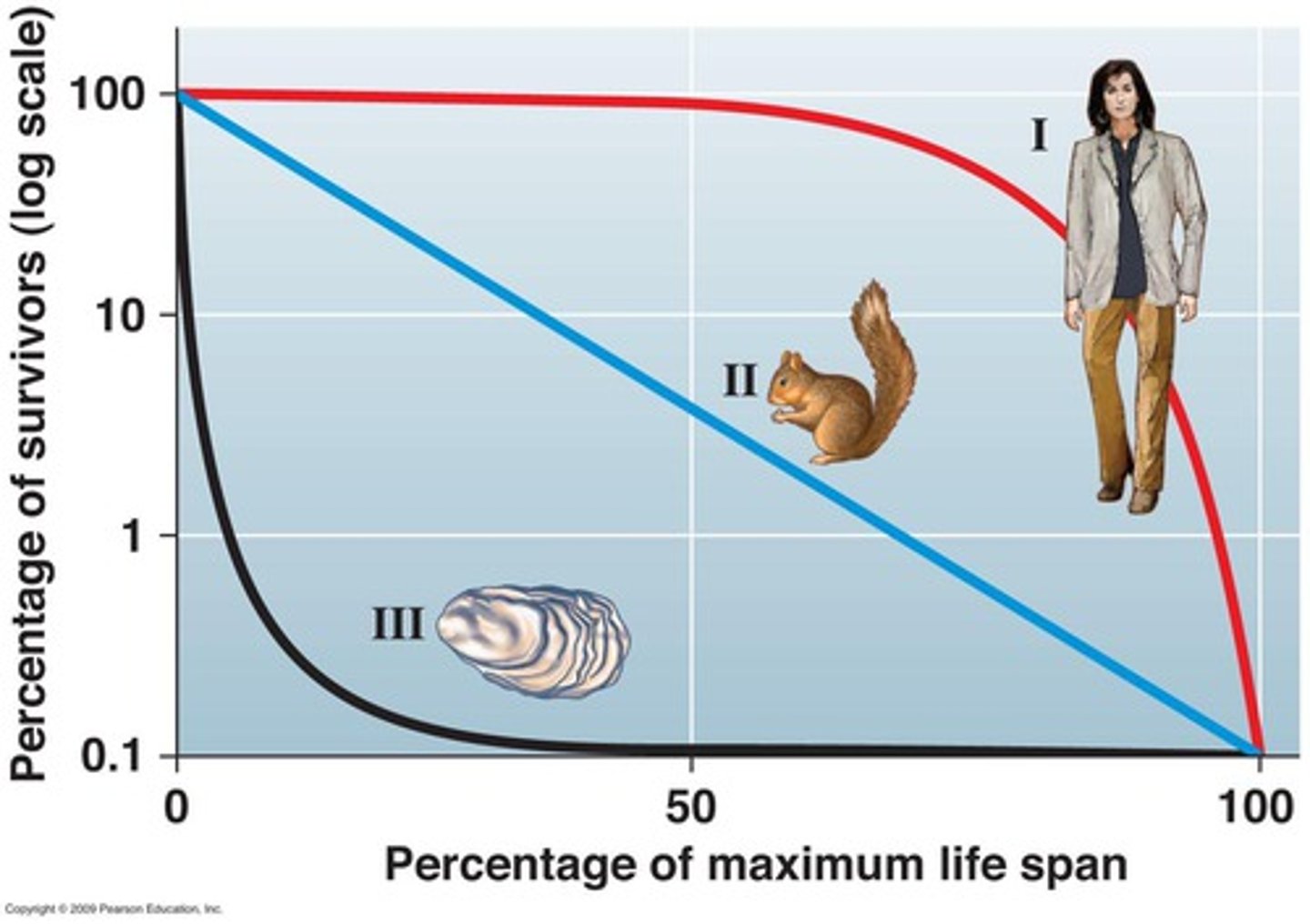
Fecundity
the reproductive rate of an organism or the average number of offspring produced by an individual at a specific age
parasitism
when one organism, the parasite, benefits at the expense of another organism, the host.
What are test crosses
When you take a homozygous recessive individual and cross them with an unknown to determine if they are homozygous our heterozygous
Wild-type alleles
the allele that is present in most individuals in nature
Adaptation
a favored trait that spreads through a population by natural selection
Cell division
When one cell is able to give rise to 2 cells
Can be symmetrical or asymmetrical
Asymmetrical Cell Division
Mother cell produces a daughter cell and remains unchanged
Common in plants and animals
Symmetrical cell division
Mother cell divides and produces. 2 cells that are essentially identical to one another and cannot be distinguished
Common in bacteria and single-celled eukaryotes
asexual reproduction
Process by which a single parent reproduces by itself and created clones of themselves
Mutations
Alterations in DNA sequence
binary fission
A type of asexual reproduction that produced two genetically identical daughter cells from a parent cell
Common in single-cell prokaryotes

Mitosis
A type of cell division by single celled eukaryotes that is used to add new cells in a multicellular eukaryote
- leads to the production of non-gametes, aka somatic cells

sexual reprodection
When Gametes fuse to produce offspring that differ genetically from one another and their parents
Meiosis
Type of cell division that results in the production of daughter cells that contain only half of the DNA of the original cell
- leads to the production of sperm and eggs
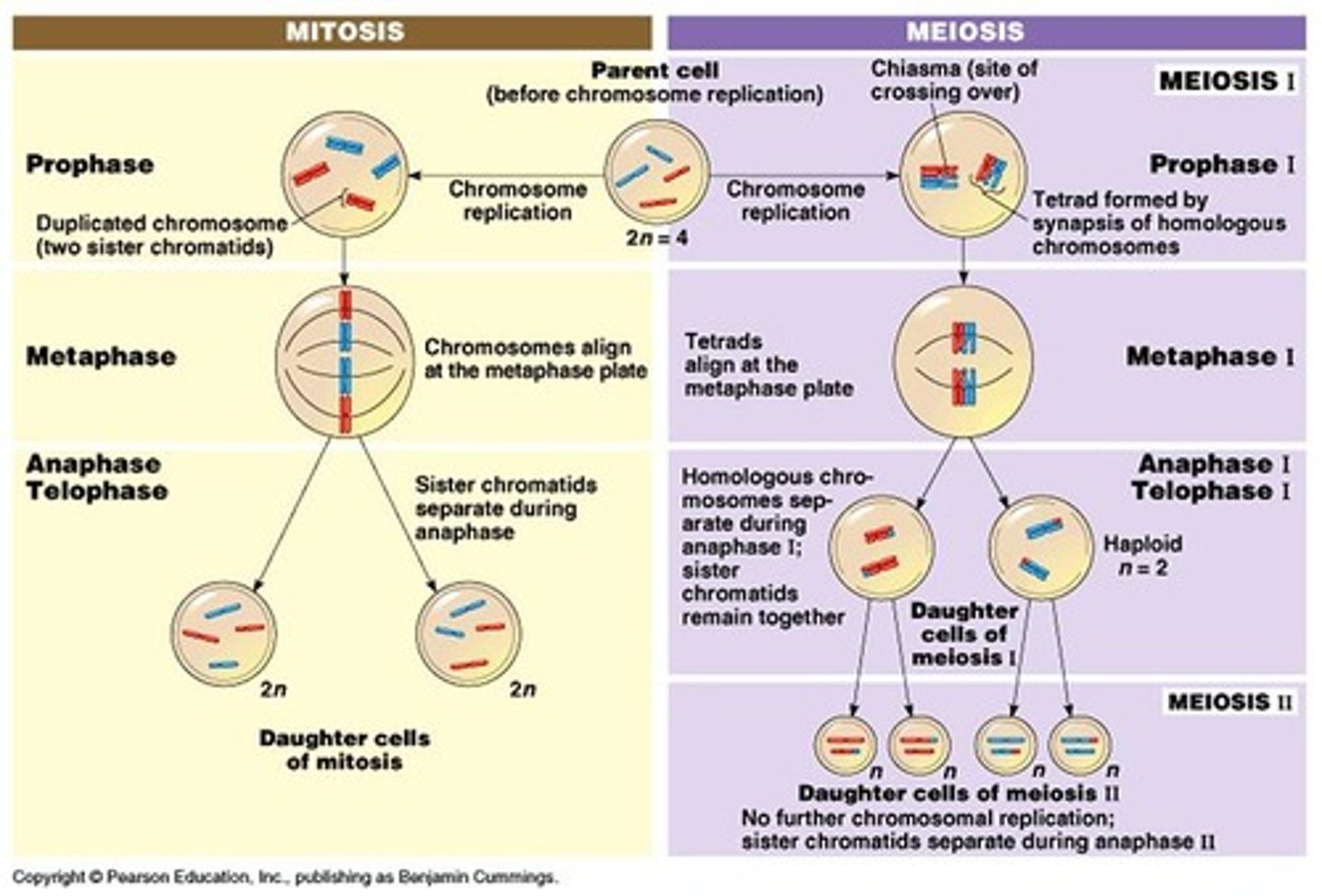
Meiosis increases ____________ which is the raw material for natural selection and evolution
Genetic diversity
Somatic Cells
Any cell in the body of a multicellular organism that is not specialized for reproduction
Example: muscle cells, blood cell, etc.
Diploid cells
cells containing 2 copies of each chromosome
example: humans have 2 sets of 23 chromosomes = 46 chromosome
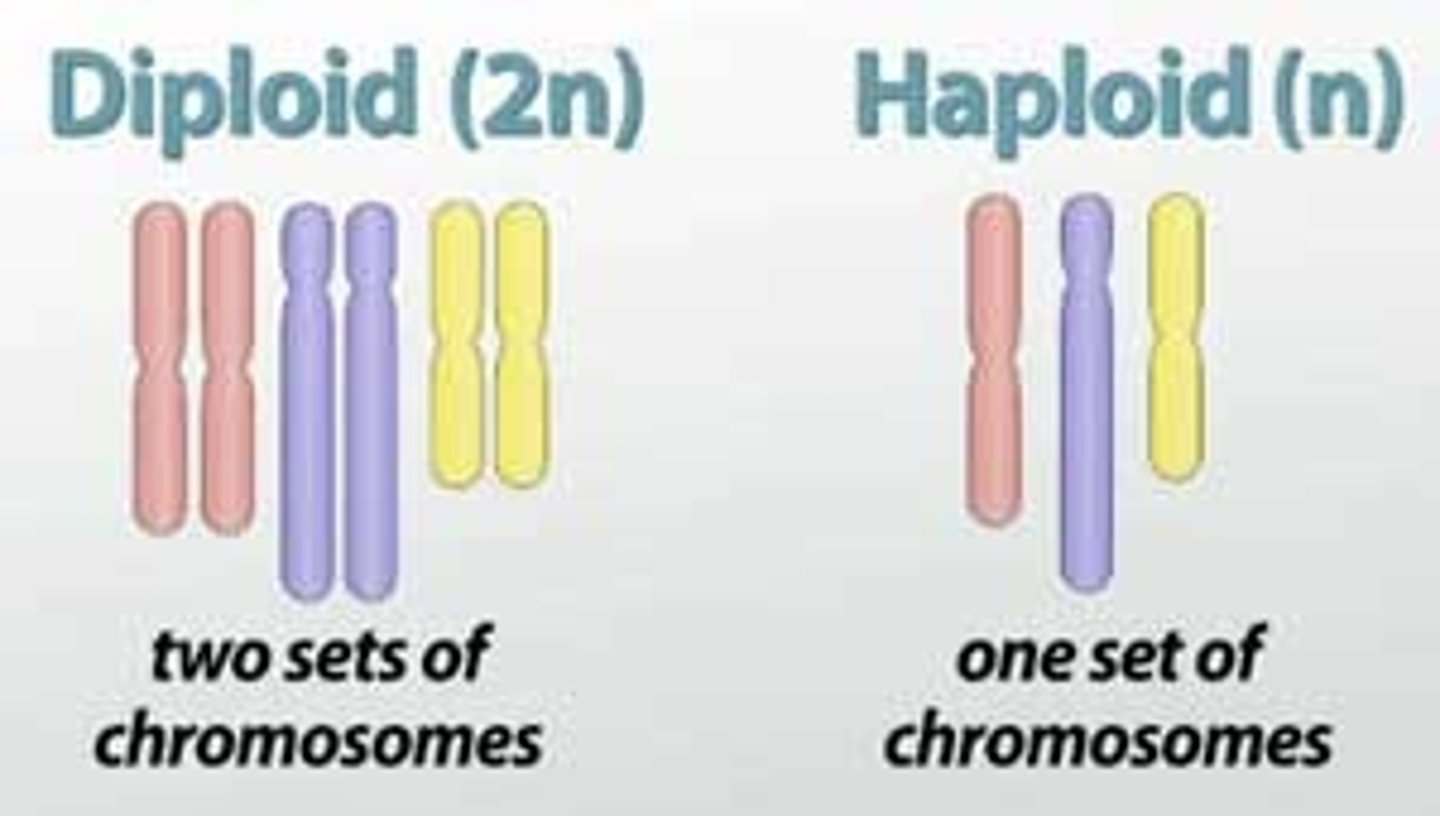
Homologous pairs
When two chromosomes in a diploid organism are nearly identical in length and DNA sequence
Genome
all the genetic material of an organism that is transmitted from parents to offspring
Gene
the region of DNA in a chromosome that coded for a particular protein
- the basic unit of inheritance
Cytokinesis
the division of the cytoplasm into two distinct cells
Cell Cycle
G1, S, G2, mitosis, cytokinesis
G1 phase
Cellular contents, excluding the chromosomes, are duplicated
S phase
Each of the 46 chromosomes is duplicated by the cell
- Synthesis (DNA Replication)
G2 Phase
The cell "double checks" the duplicated chromosomes for error, making any needed repairs
Why do cells replicate their DNA?
so that even after cell division, the daughter cells are still left with a full genome
Haploid Cells
contain 1 copy of each chromosome
Example: humans have 23 chromosomes
Polyploid Cells
cells that contain more than 2 copies of each chromosome (usually in plants)
Chromosomes 1-22 are called
autosomes
Chromosomes 23 are called
sex chromosomes
Chromosomes are held together by
centromeres
Hologram chromosomes are inherited by
one from mom and one from dad
unreplicated chromosome
a chromosome that consists of one double-helical molecule of DNA packaged with proteins
replicated chromosome
consists of two identical chromosomes where each contain one double-helical DNA molecule packed with proteins
Sister chromatids
two identical chromatid copies in a replicated chromosome
non-sister chromatids
chromatids on different members of a homologous chromosome pair
replication doubles the amount of ______, but not the number of ___________
DNA; Chromosomes
Chromosomes are compacted by being wrapped around _____________ and other proteins to form ____________
histones; chromatin
Haploid Cells
only one set of chromosomes- one homologue from each pair
